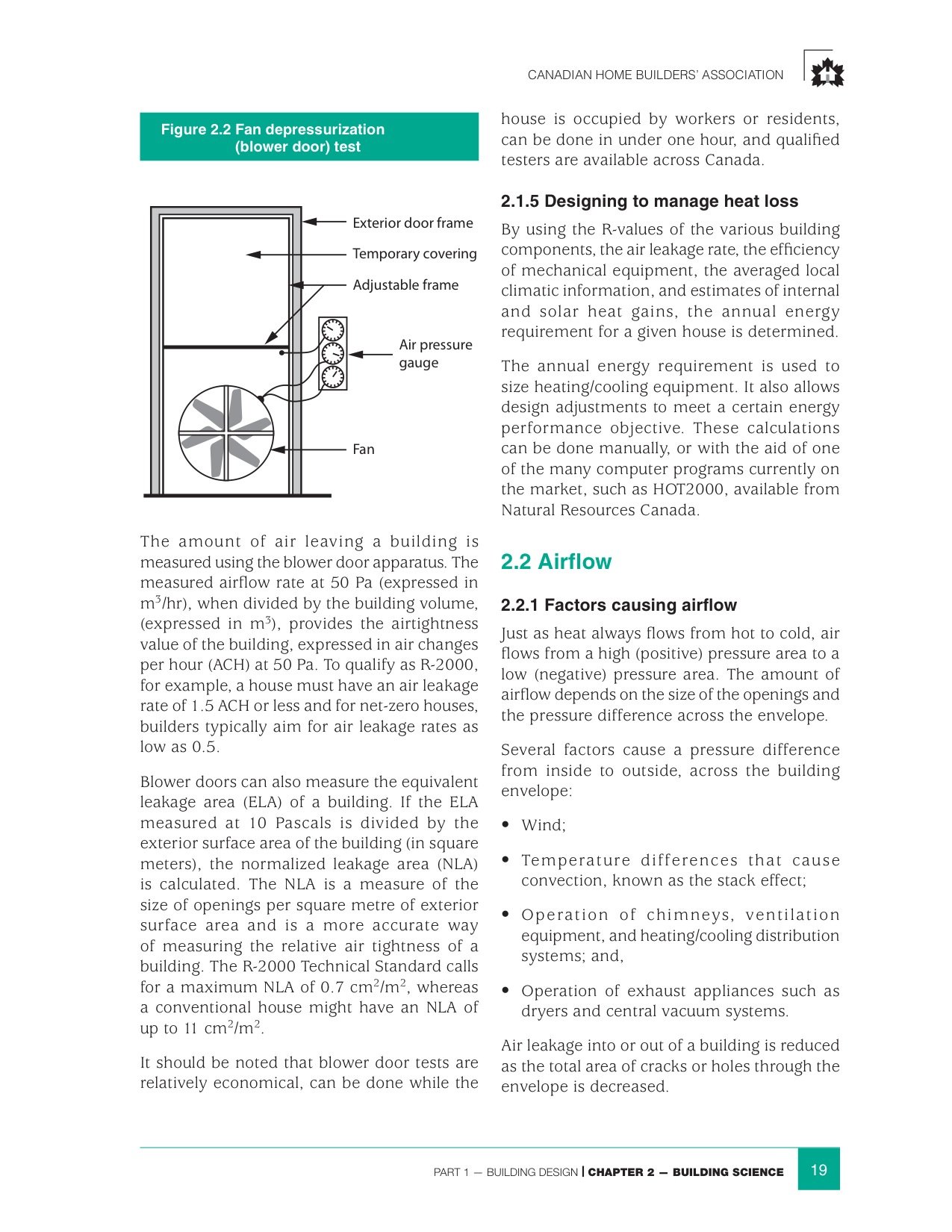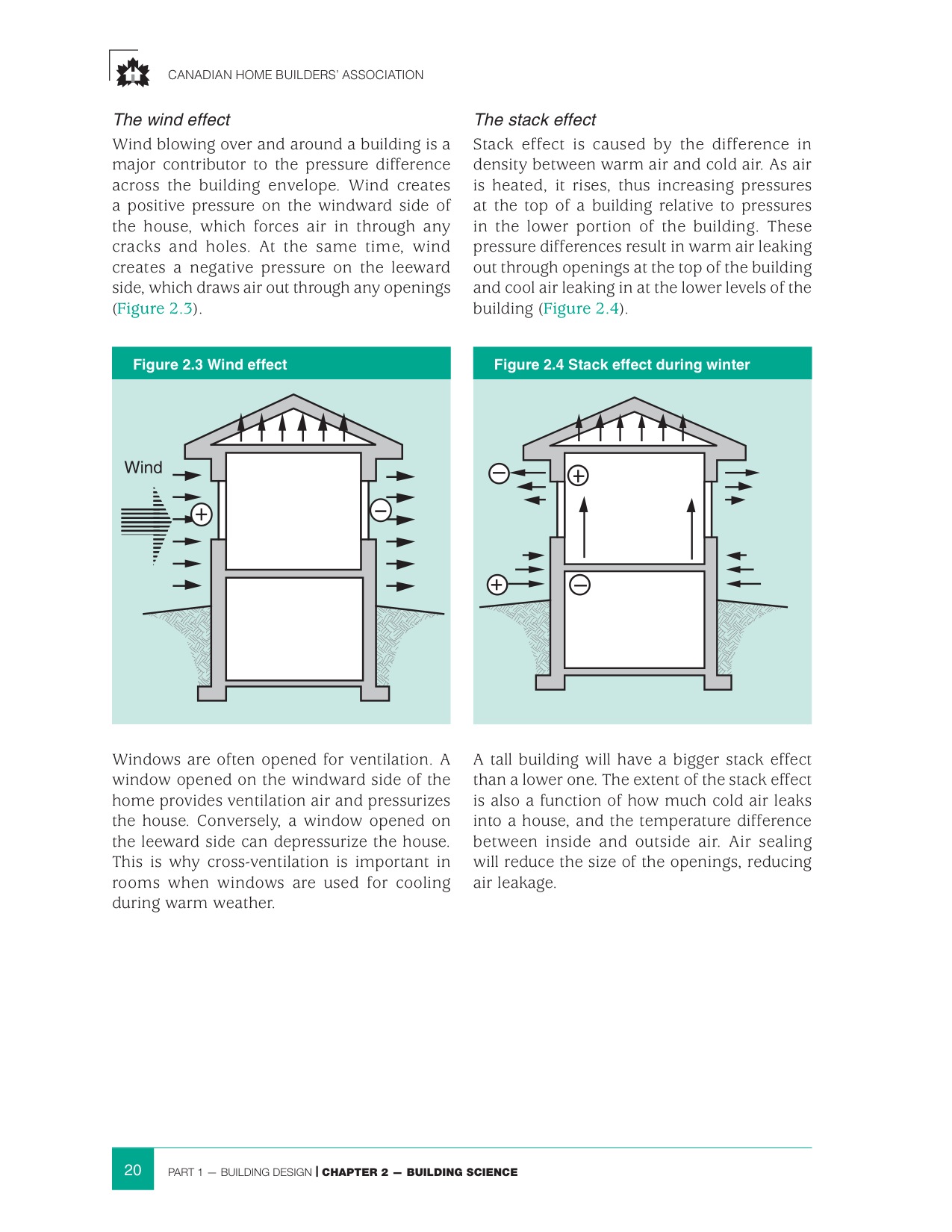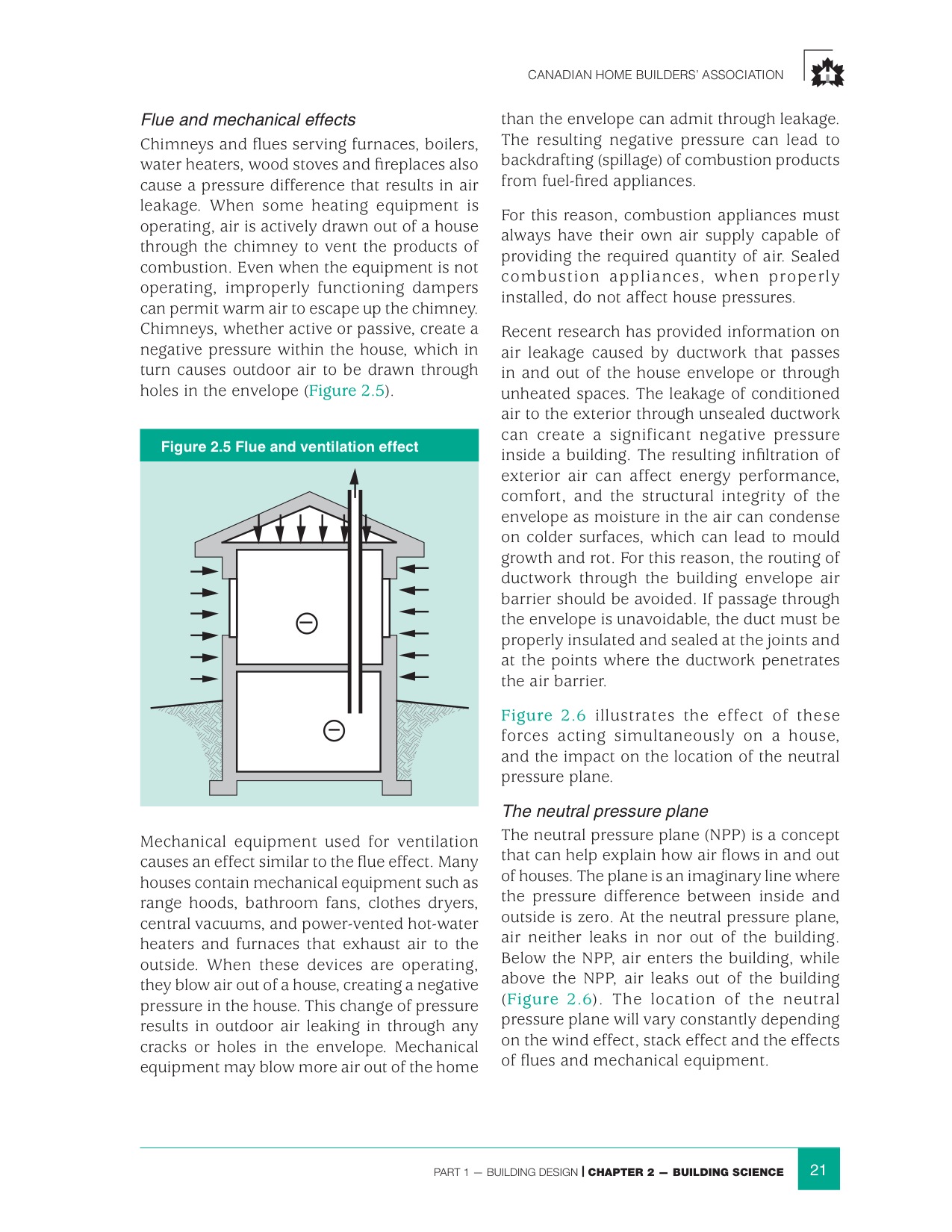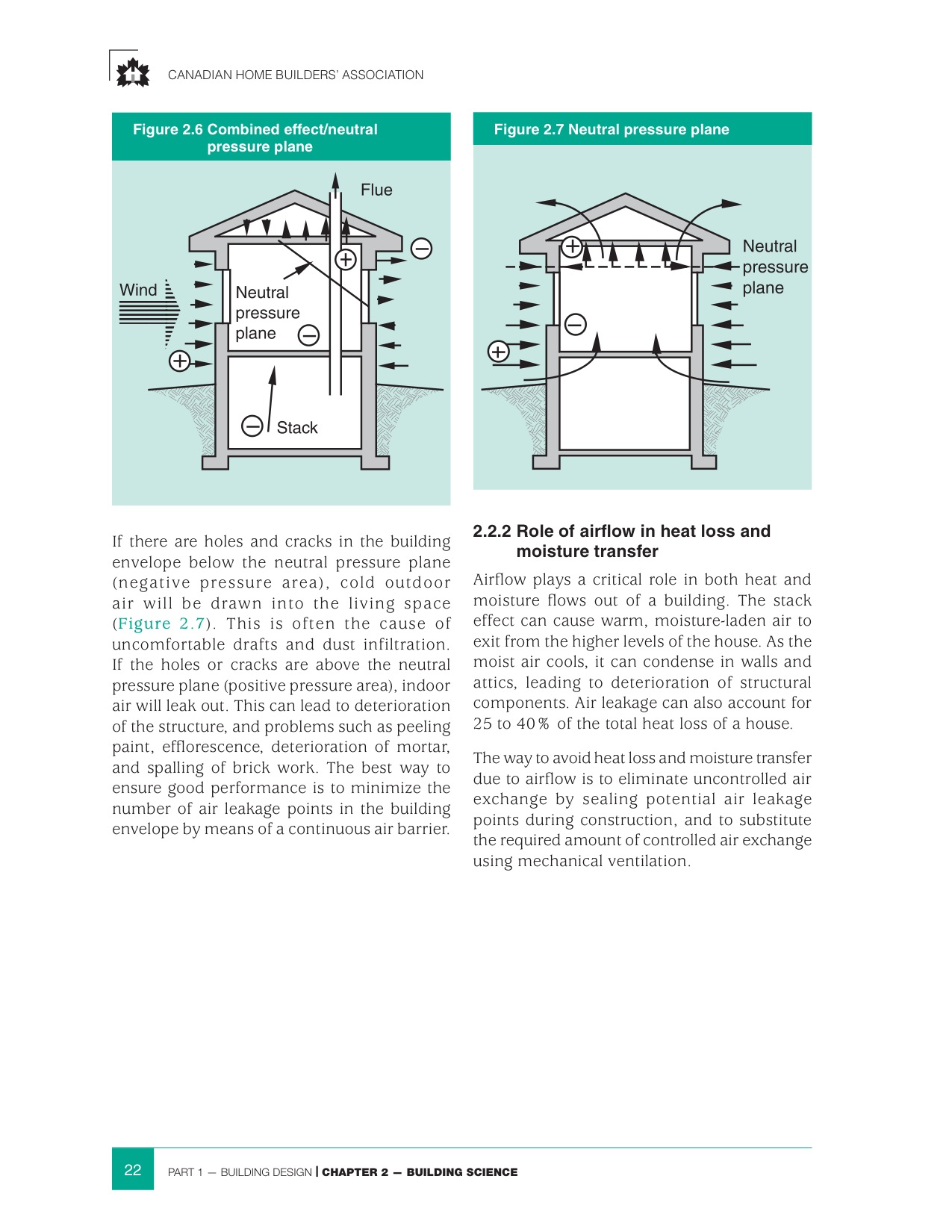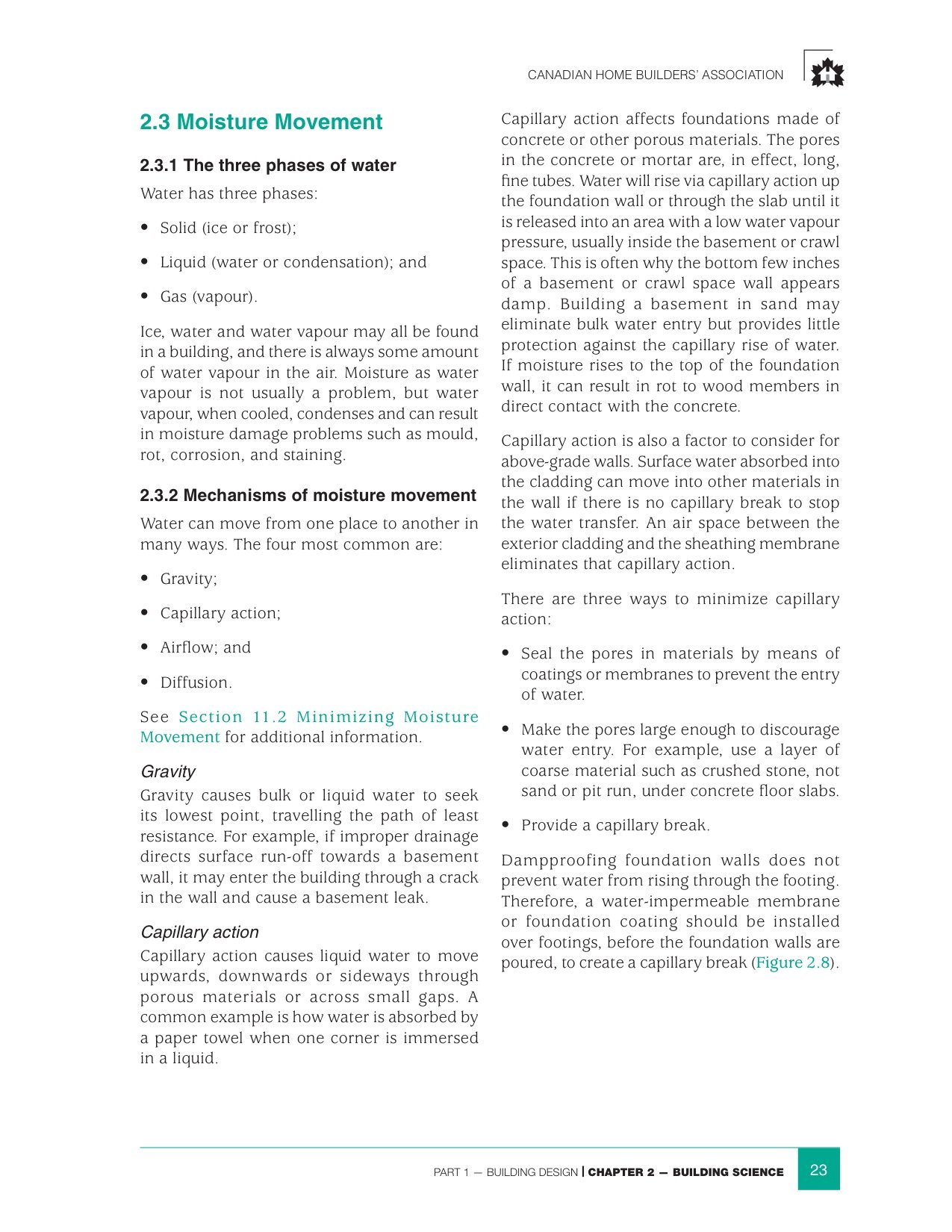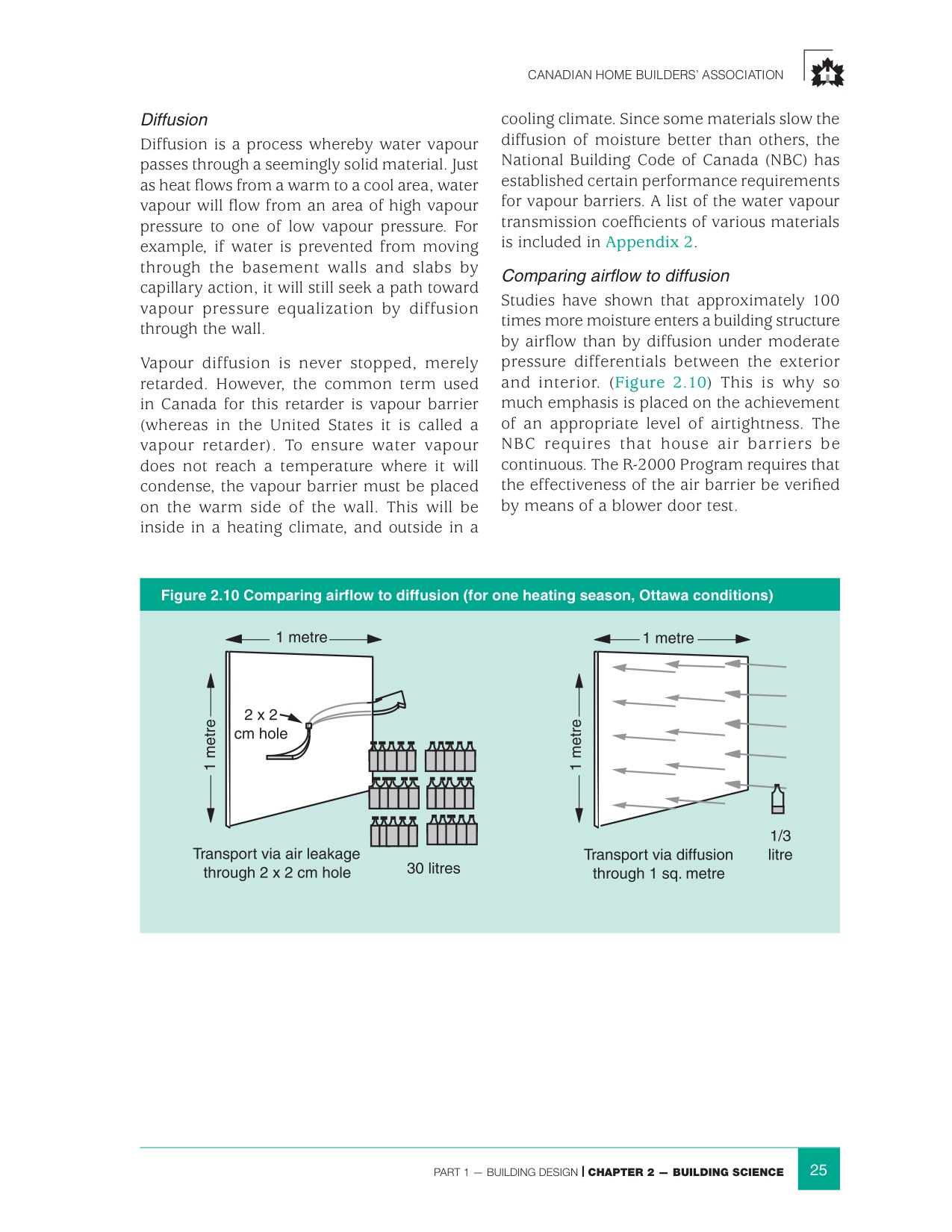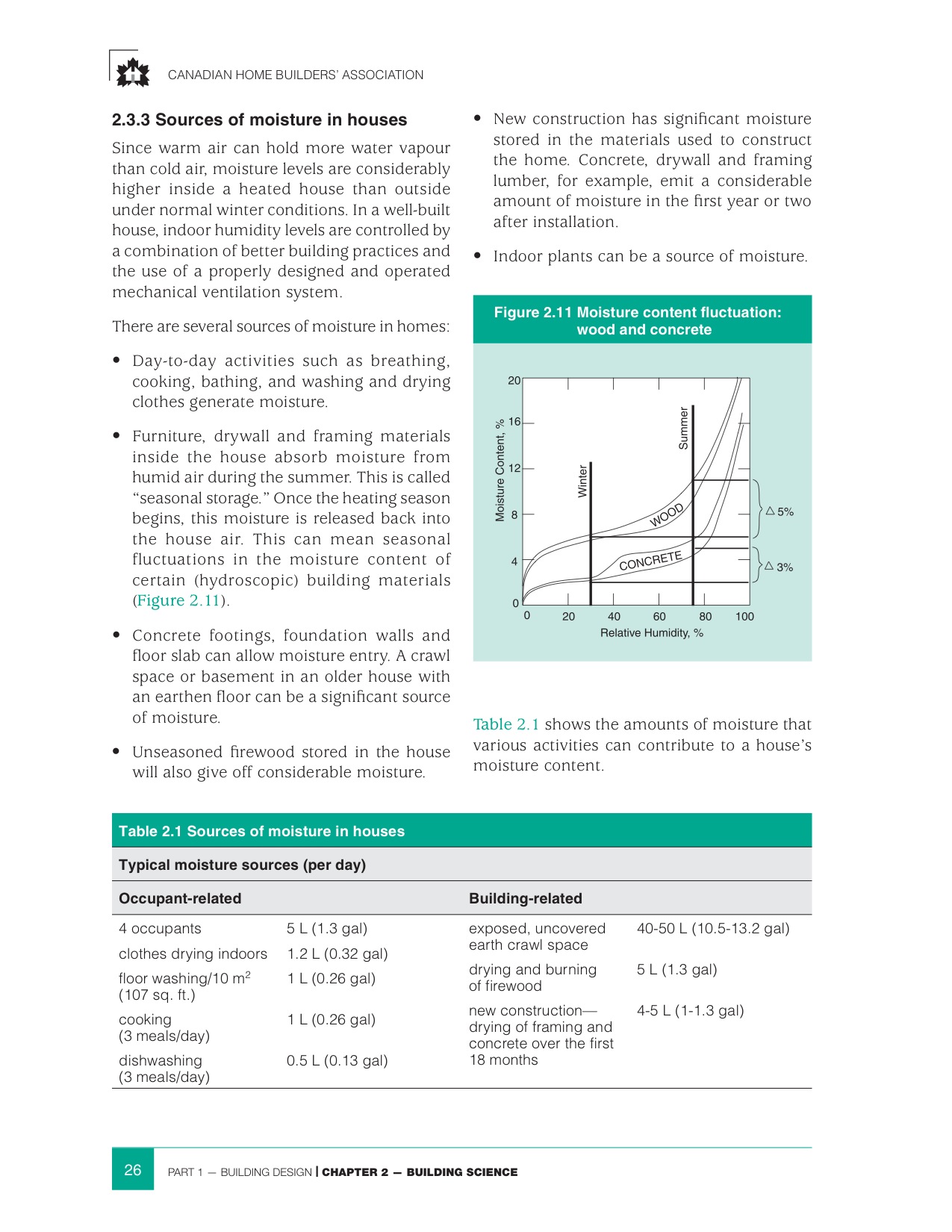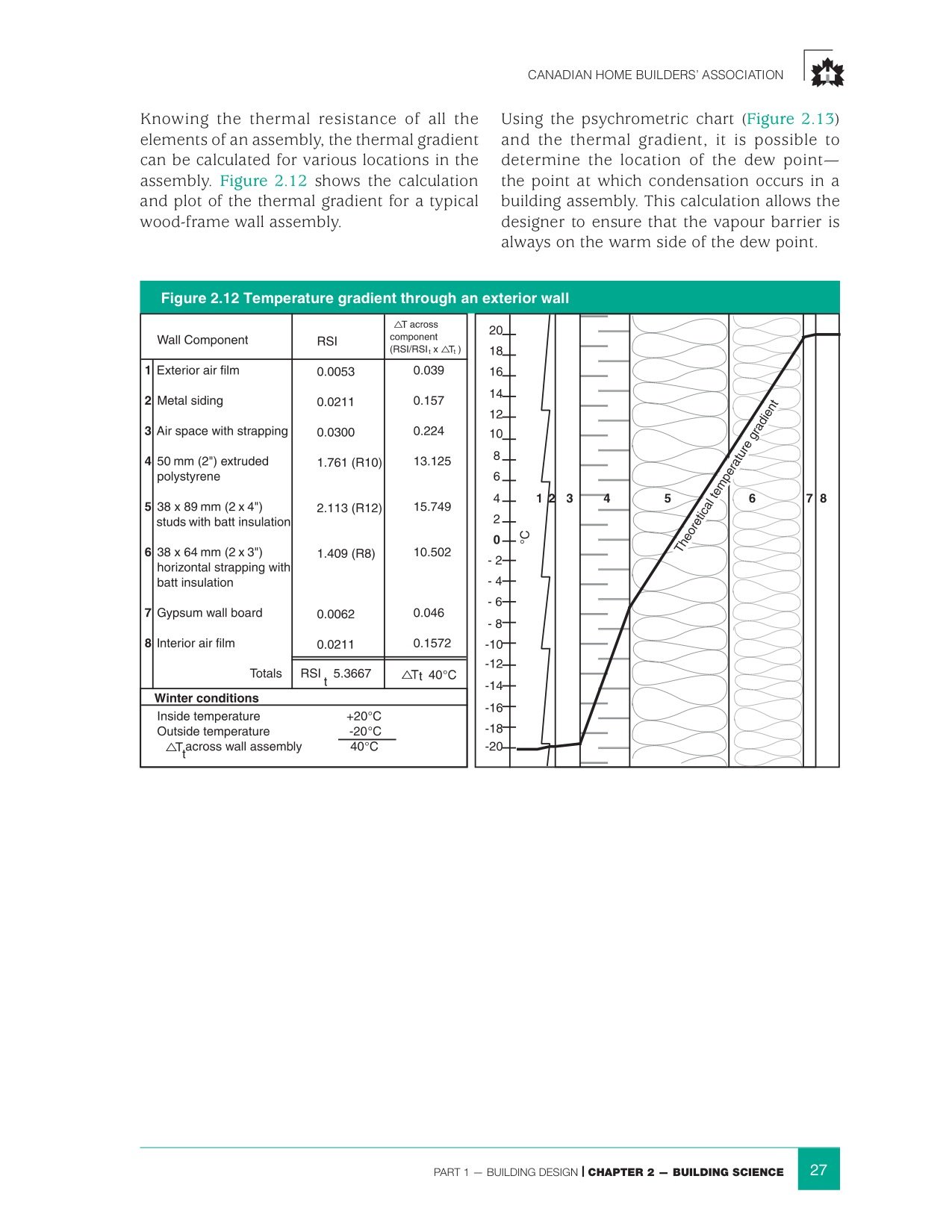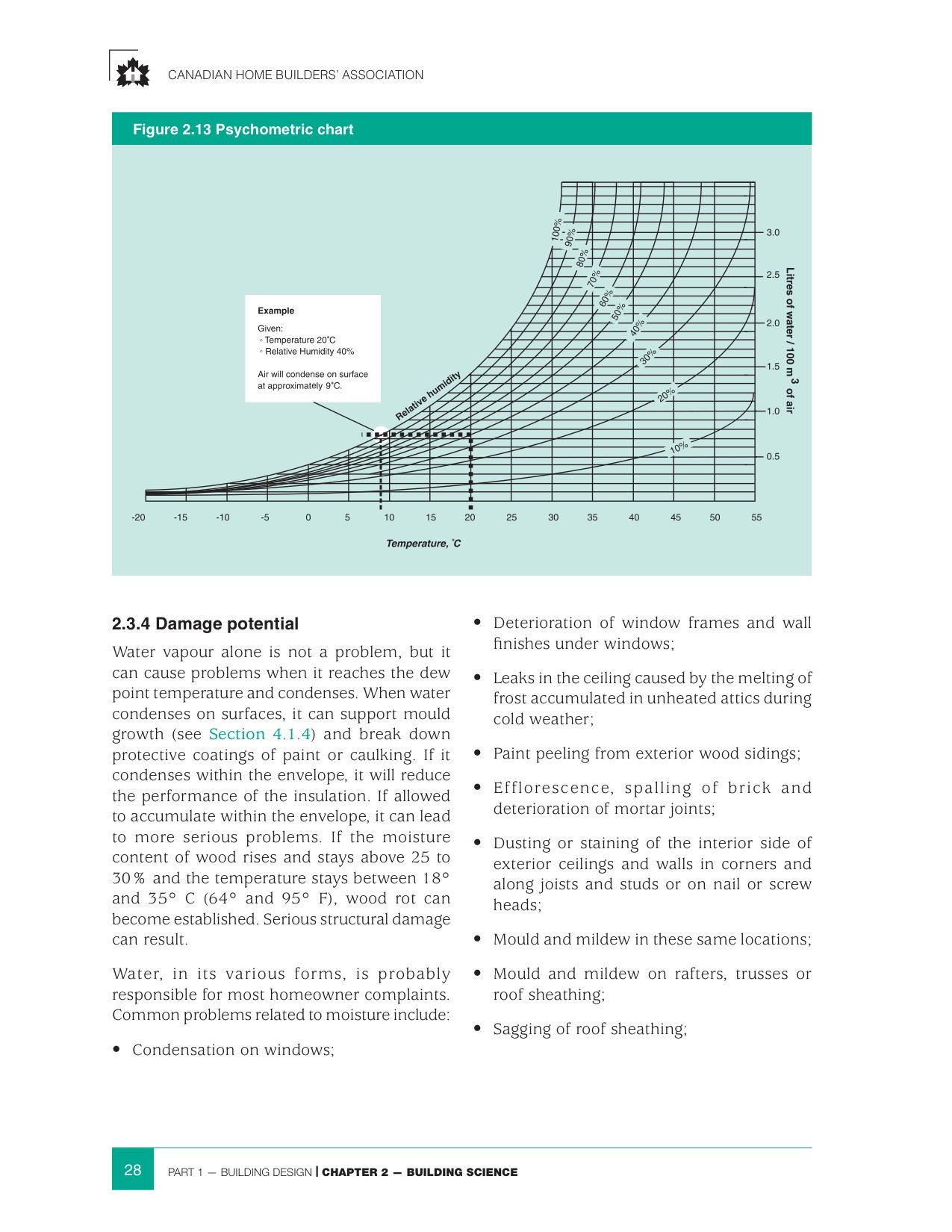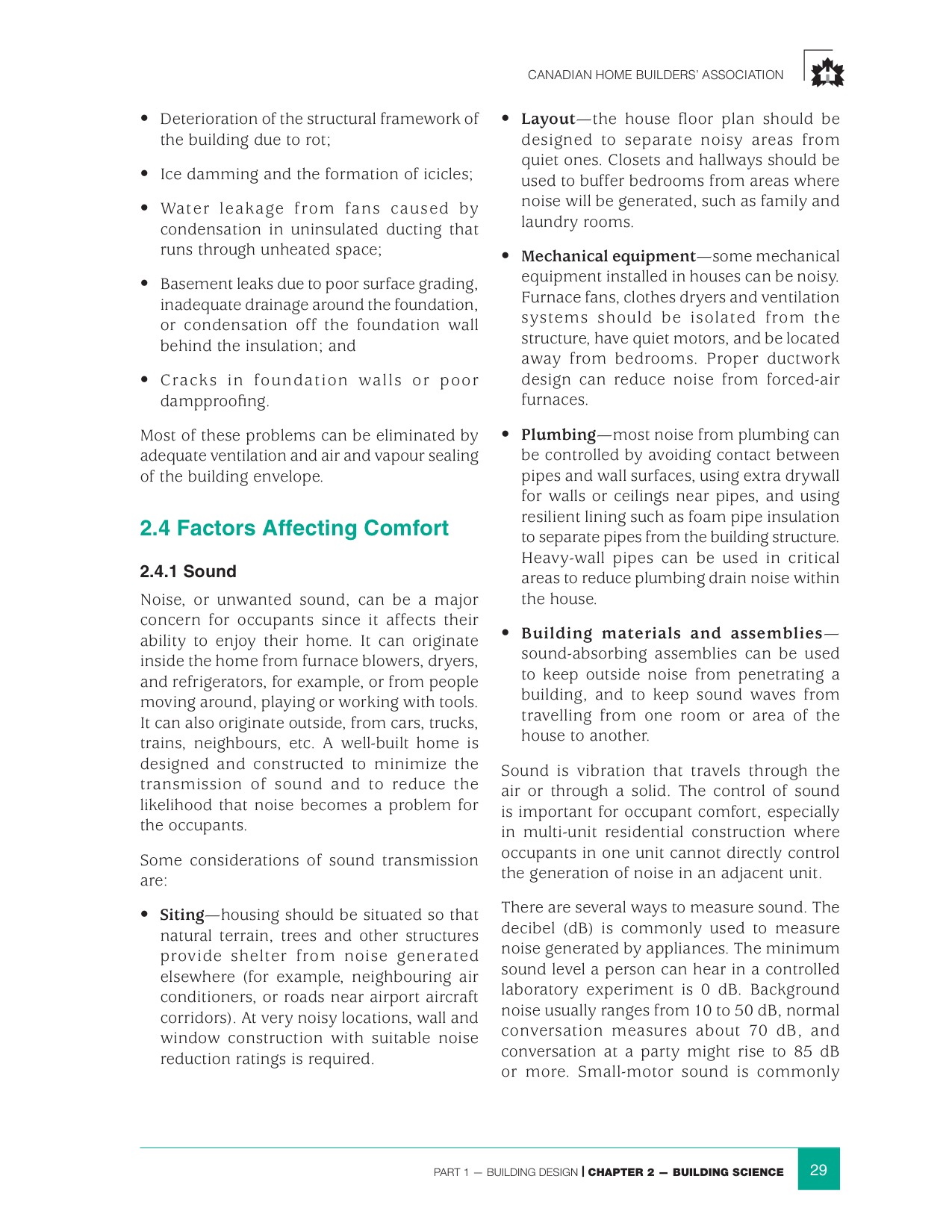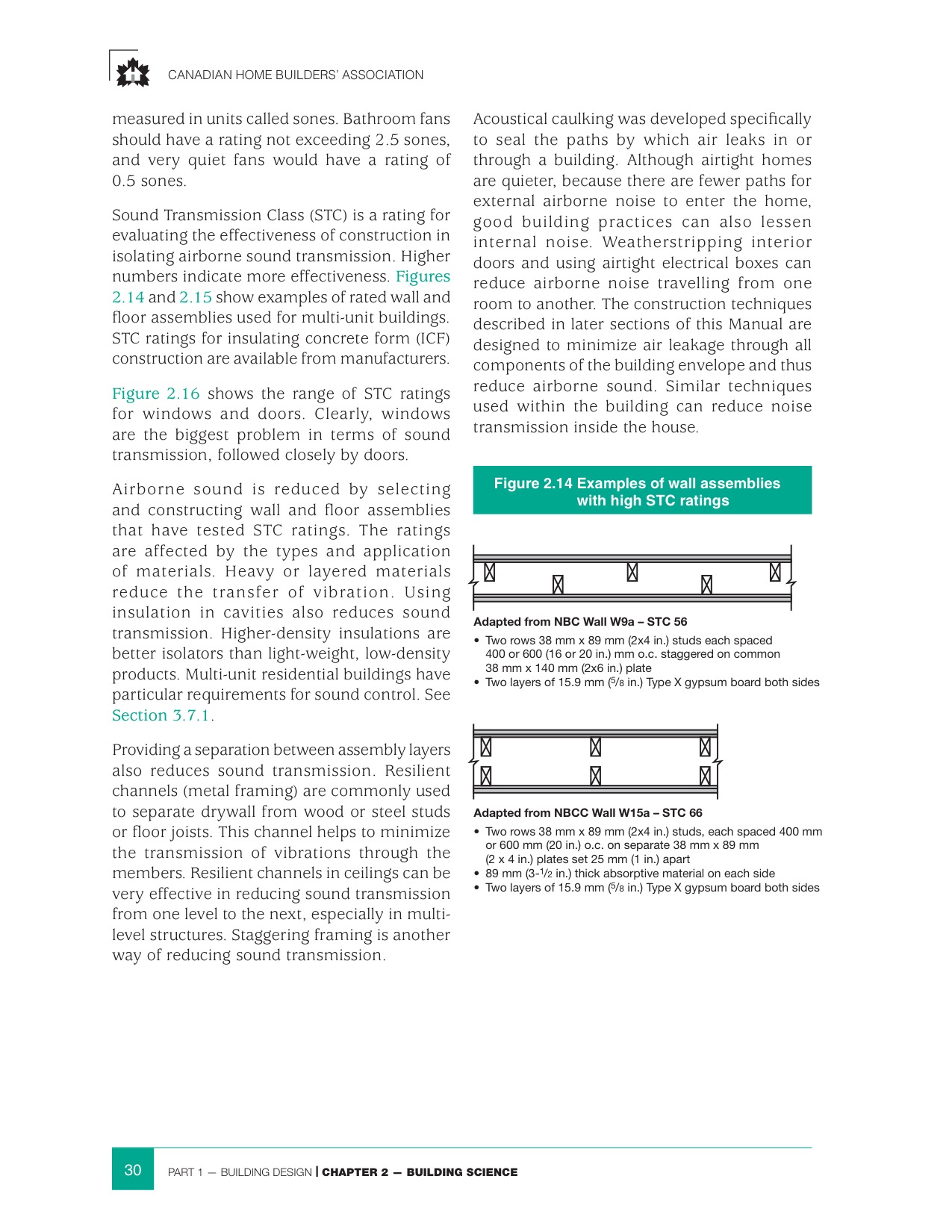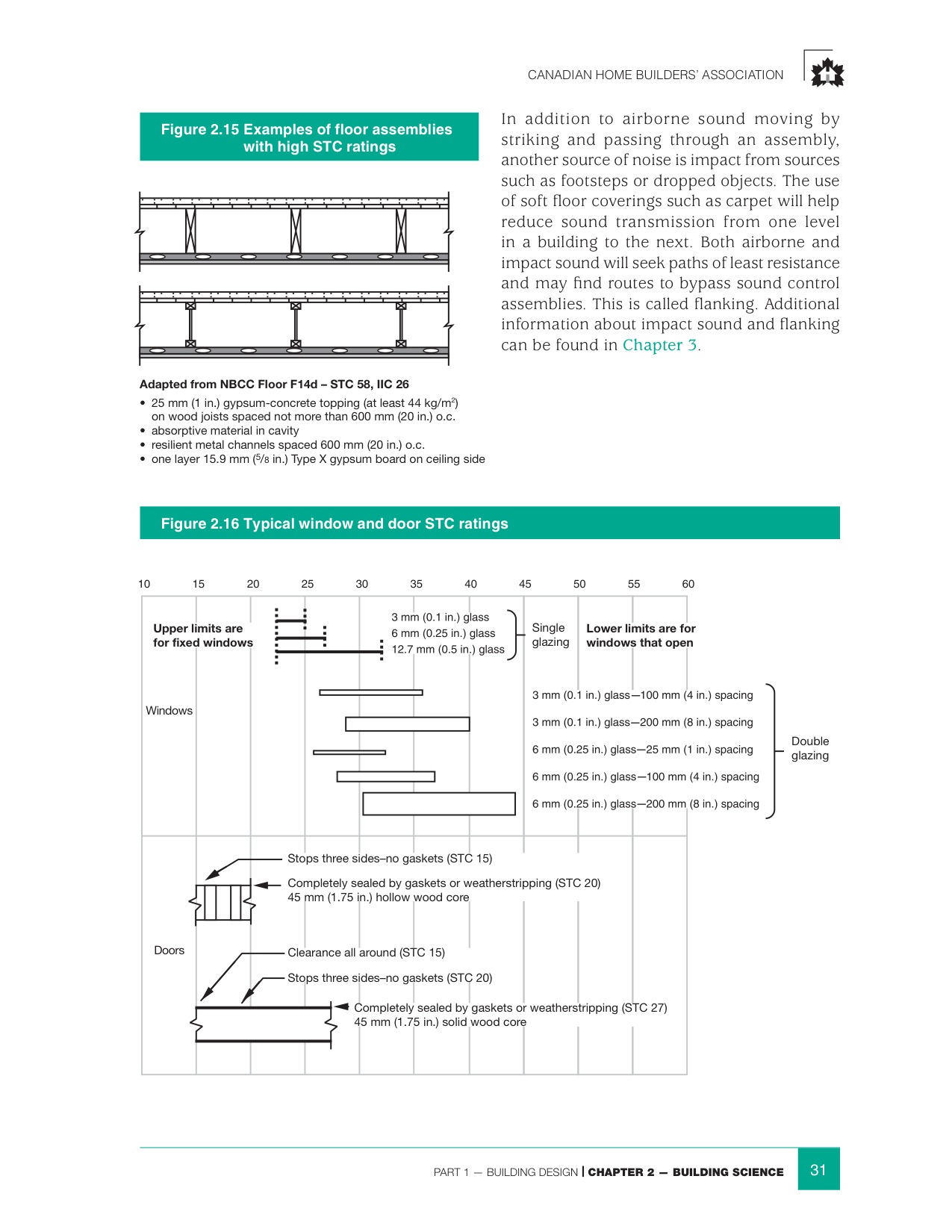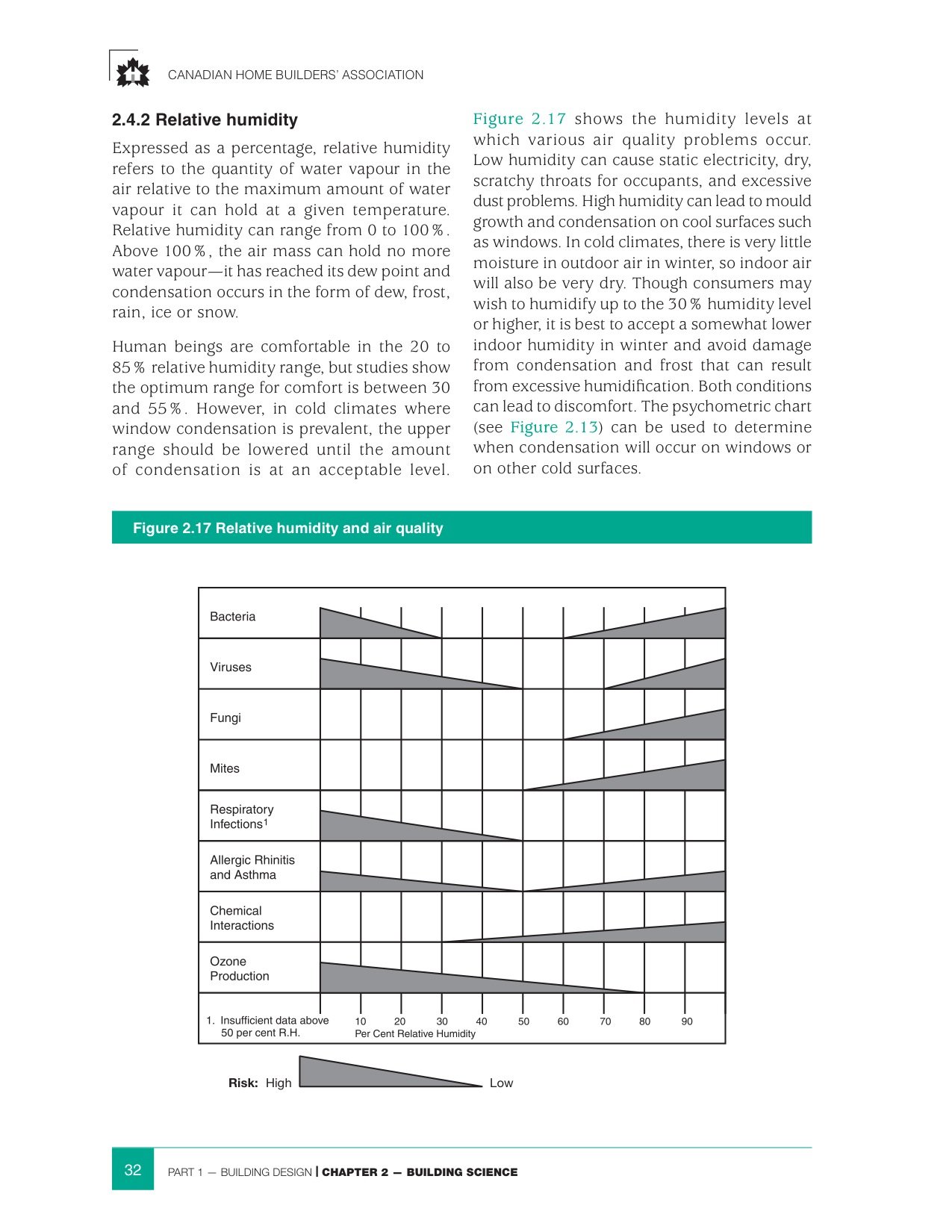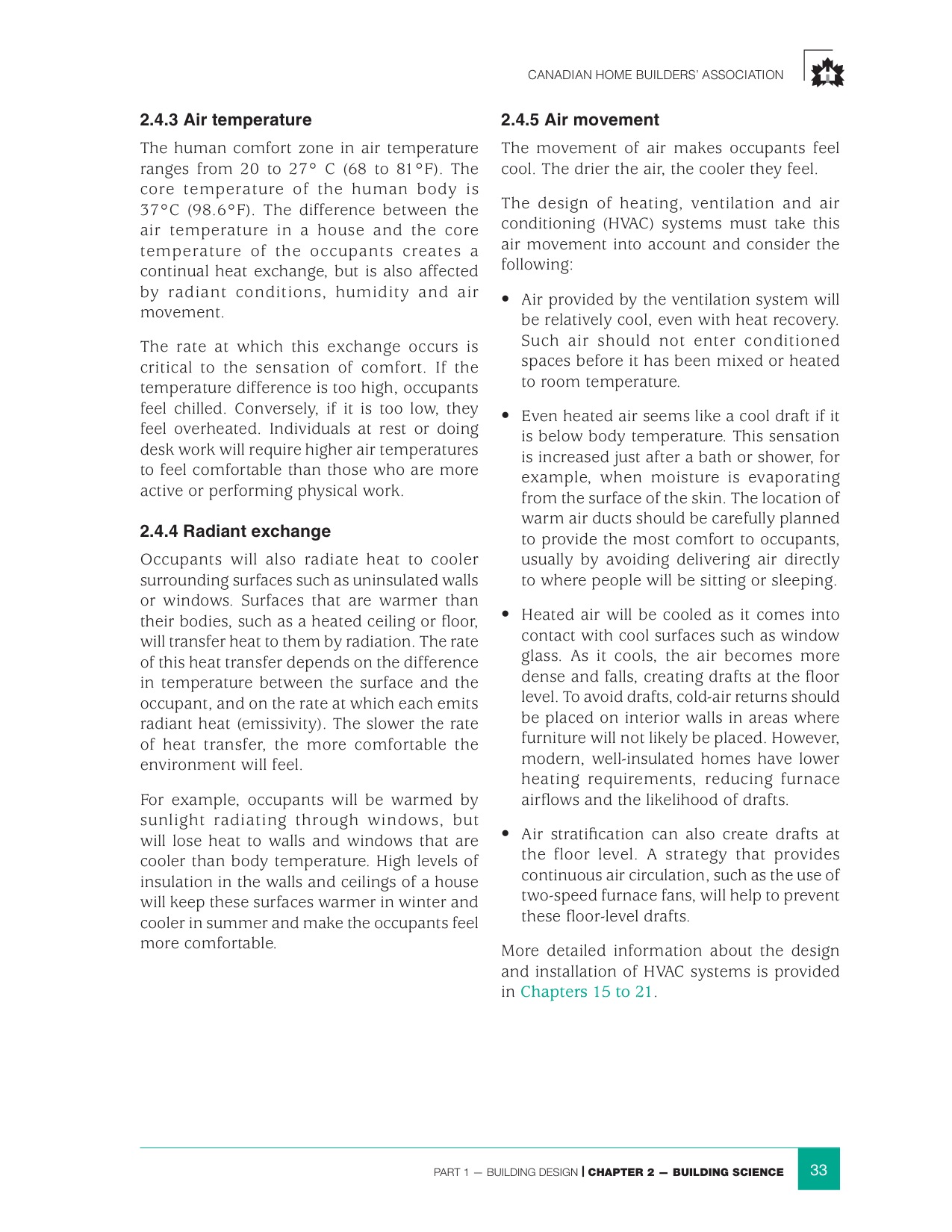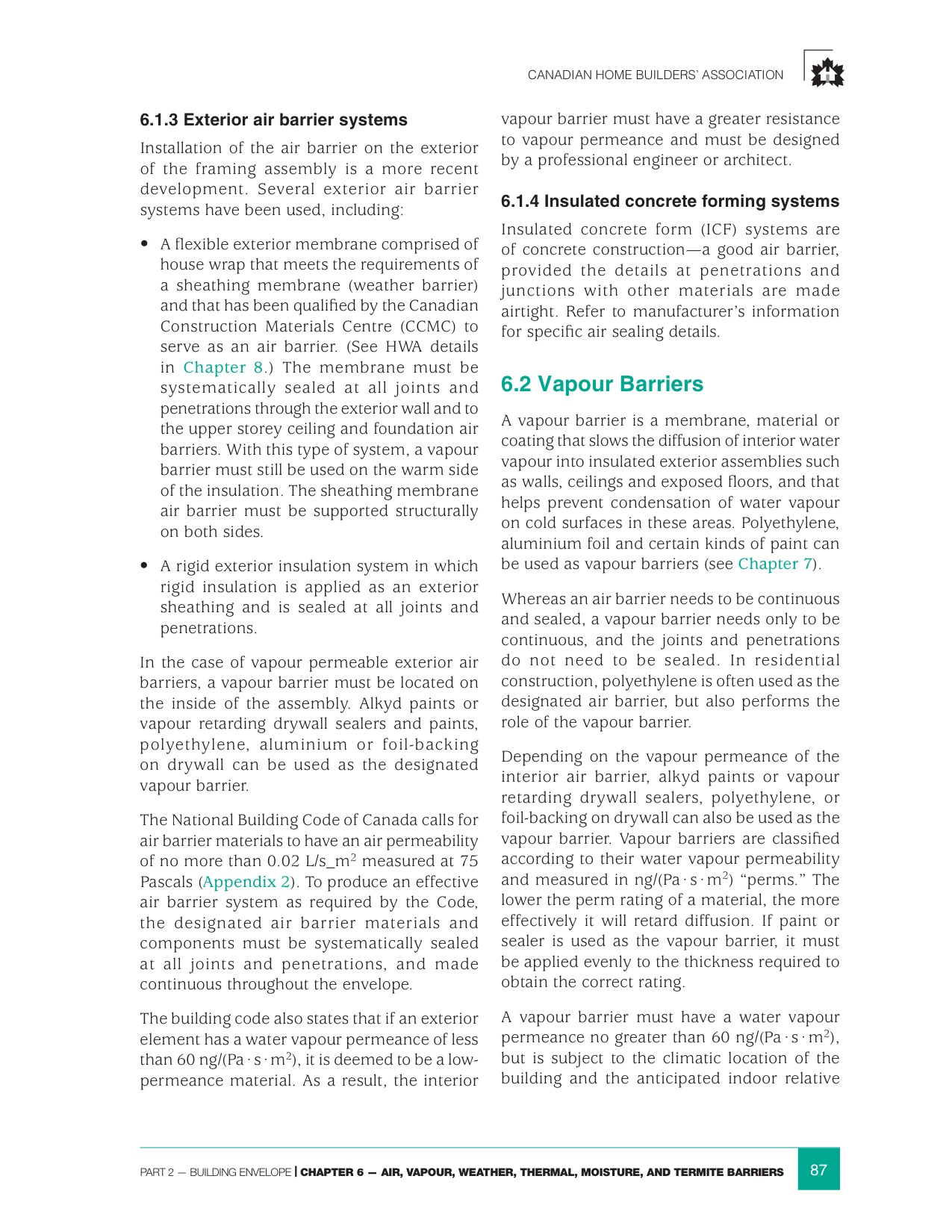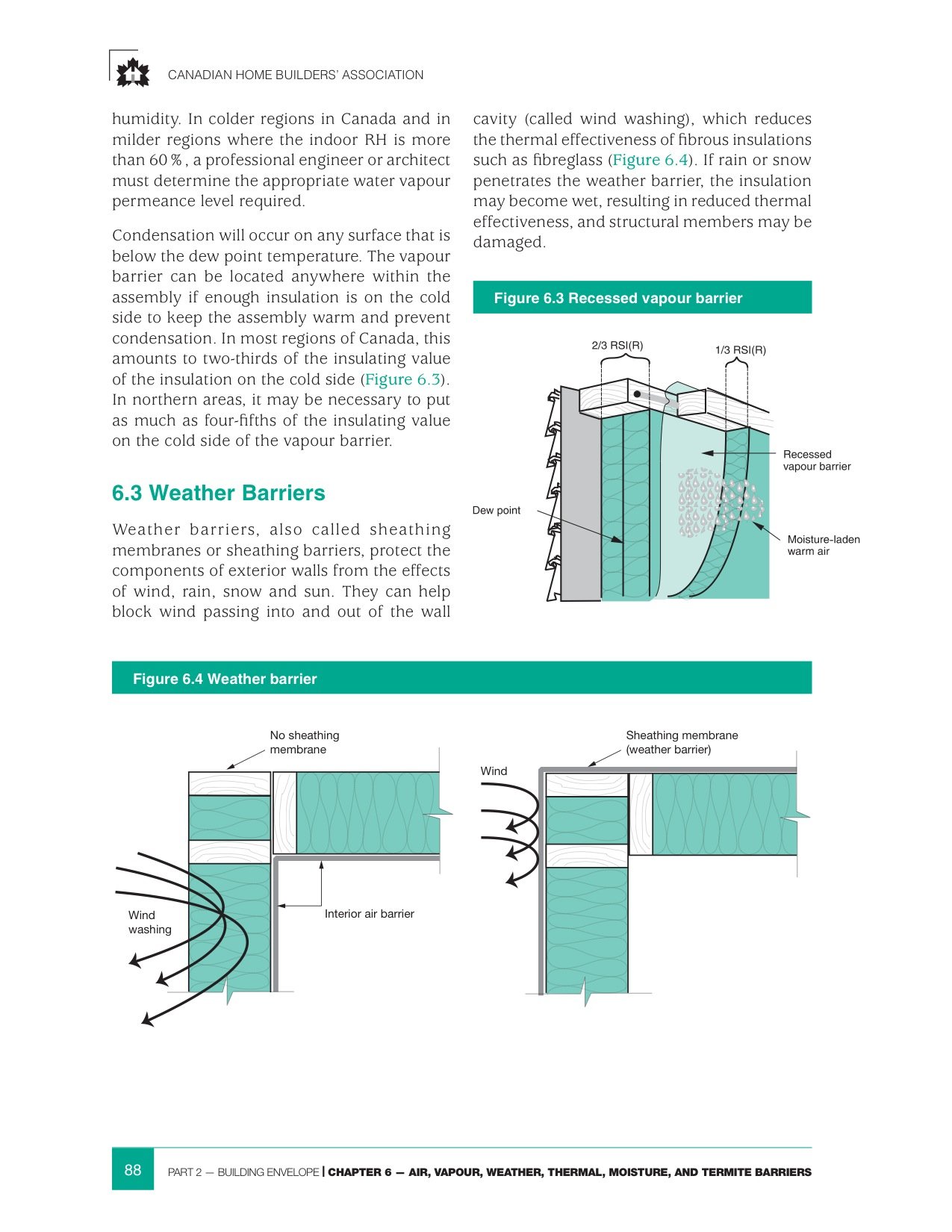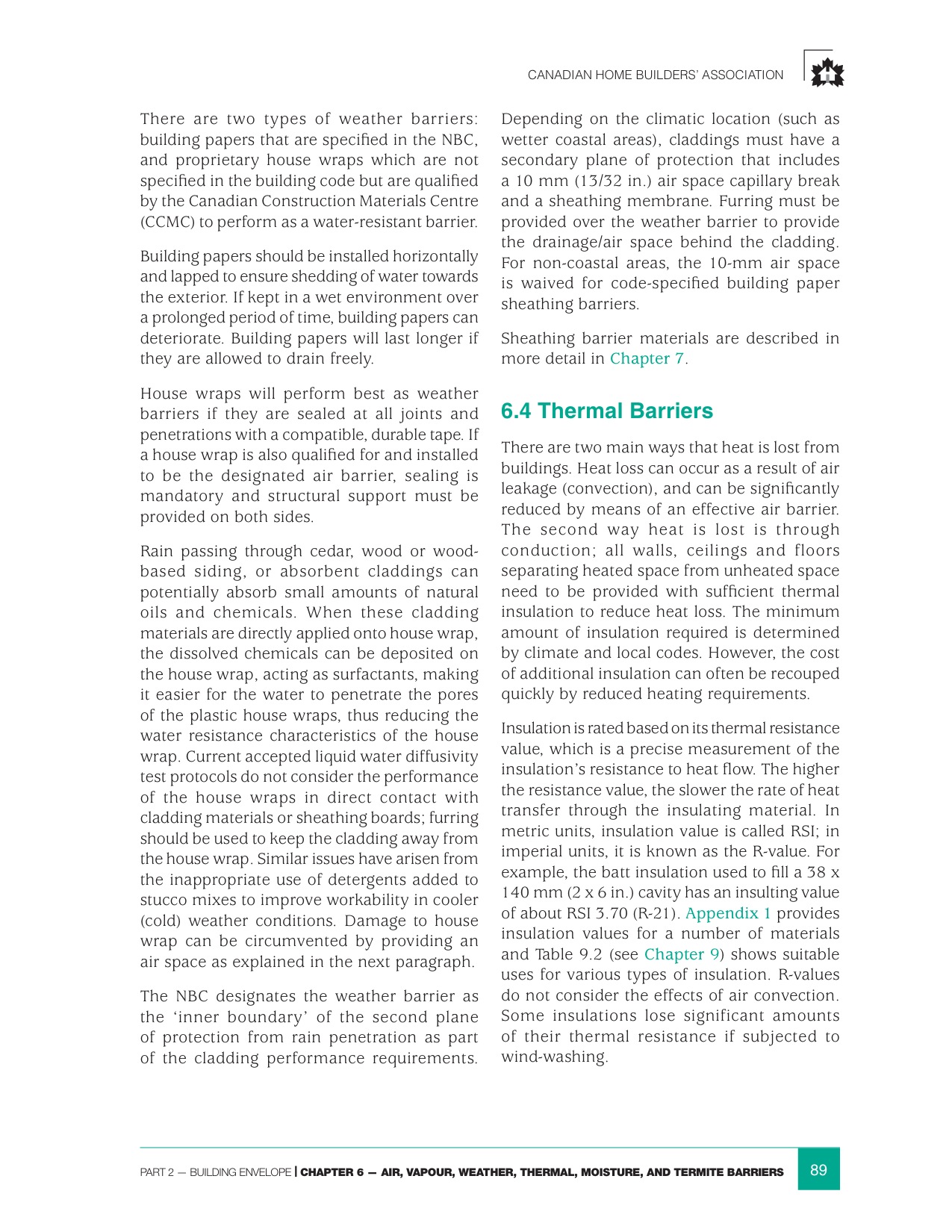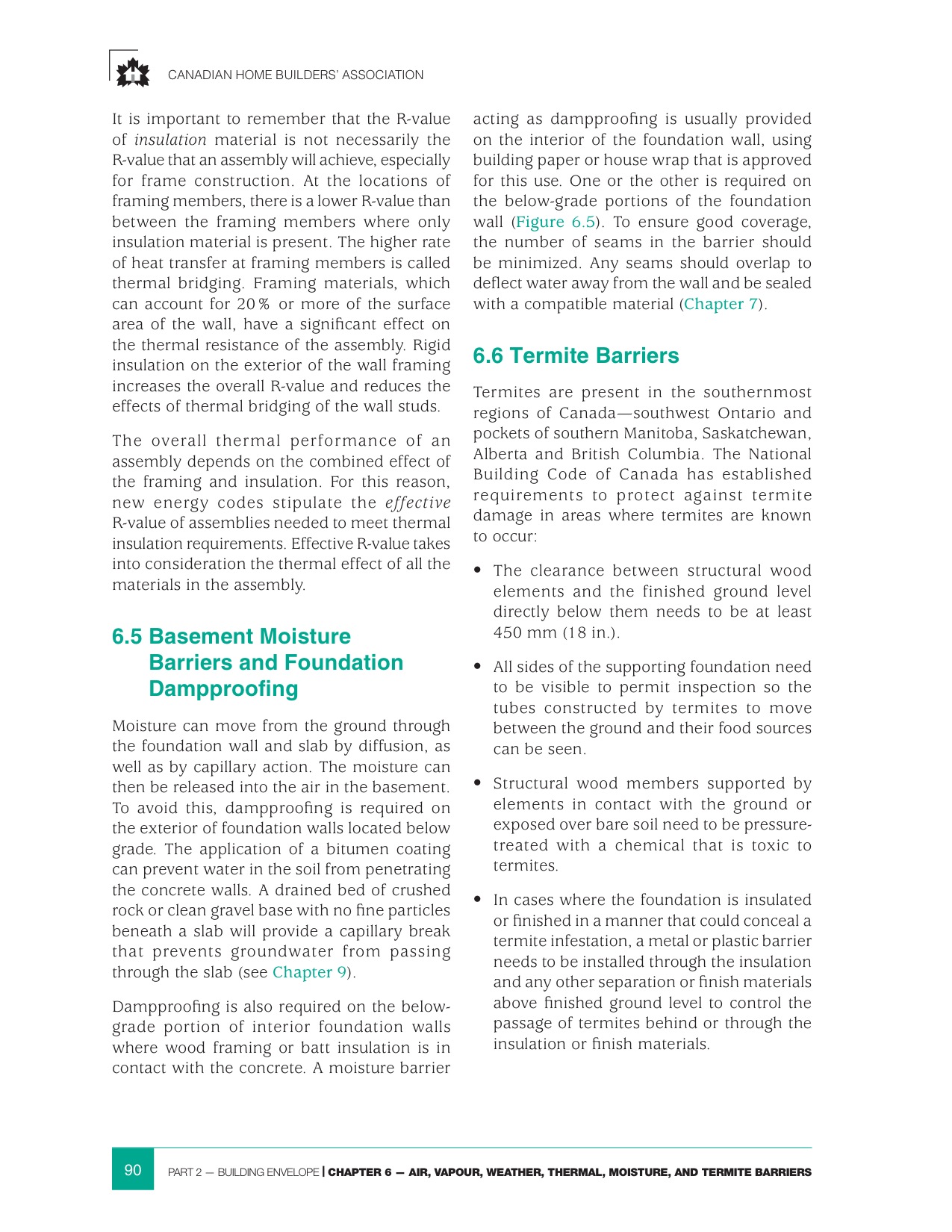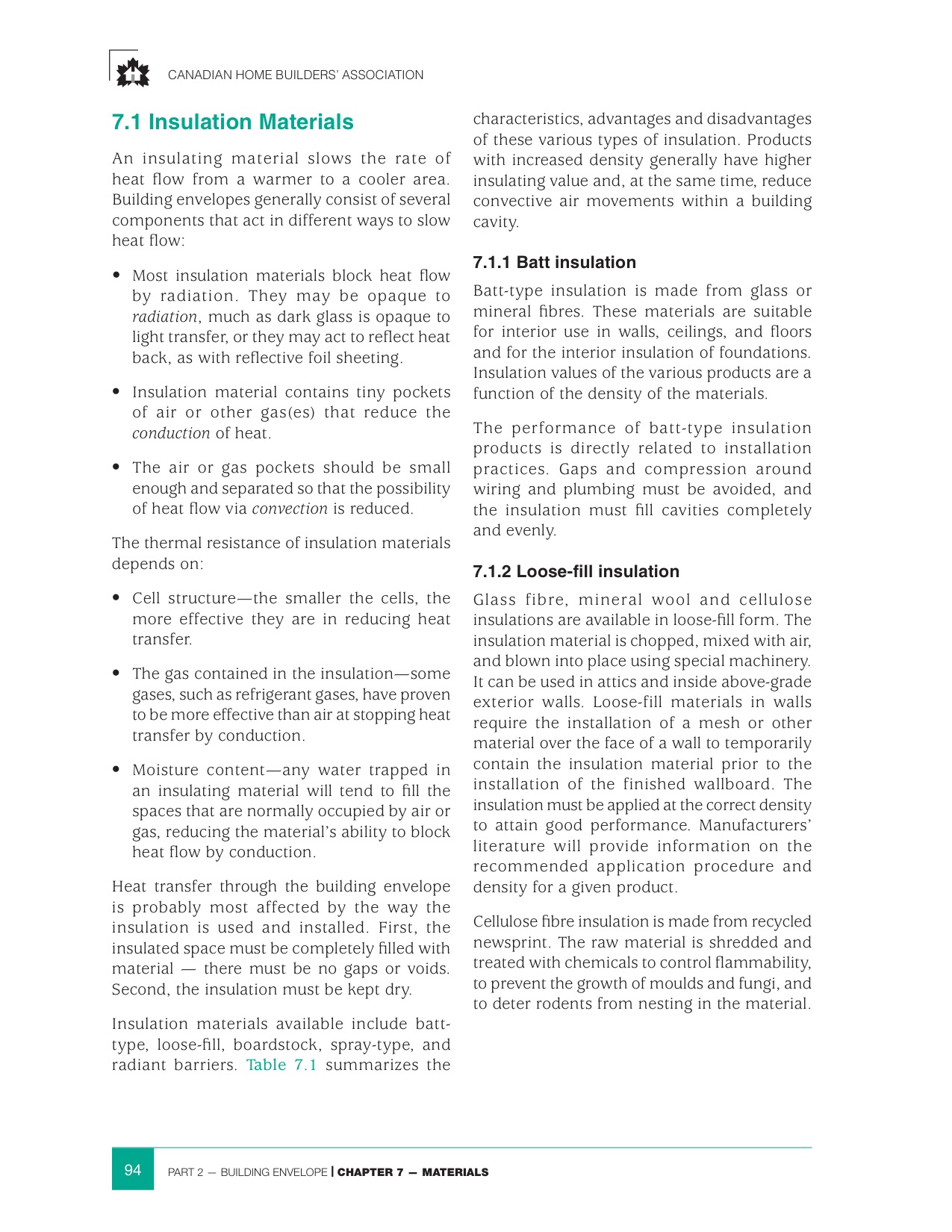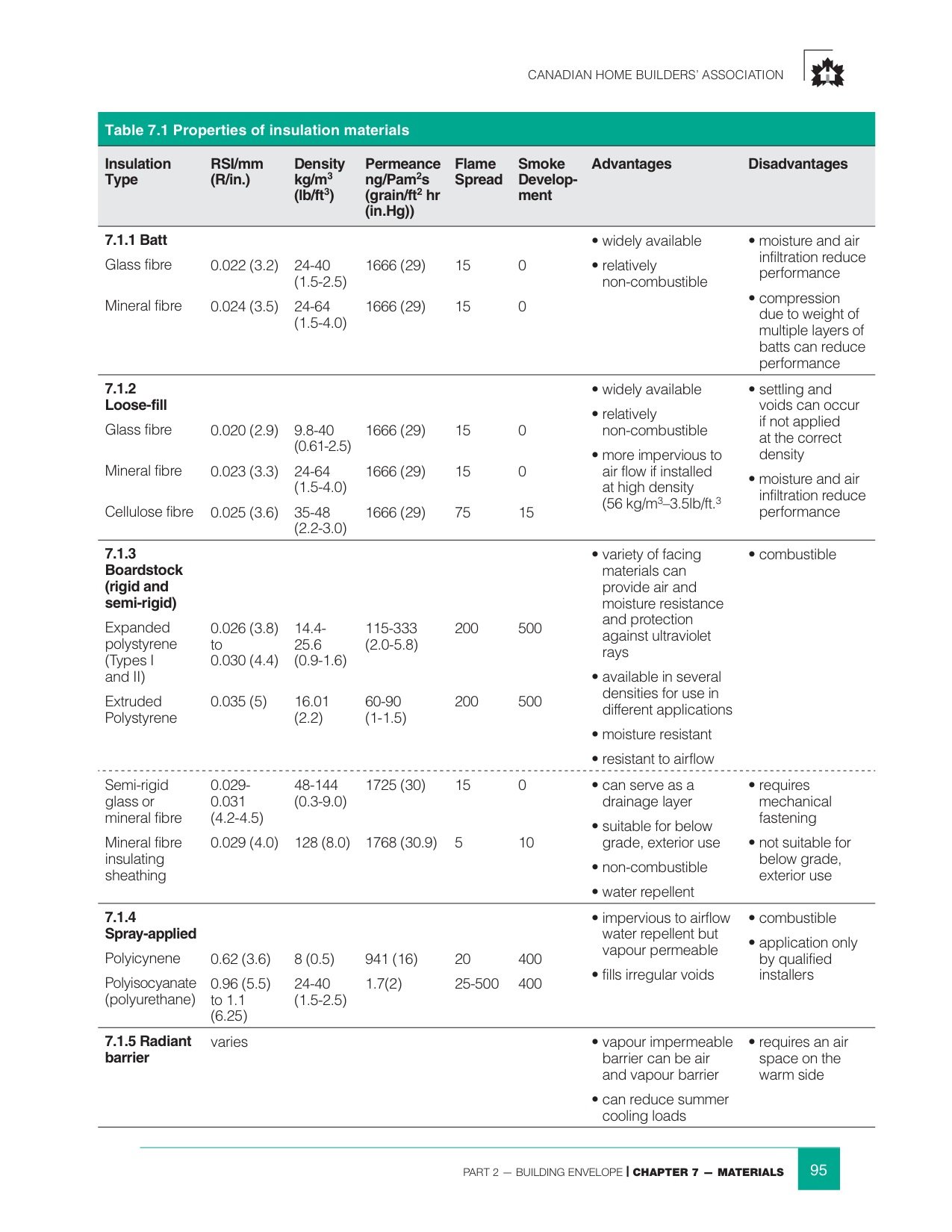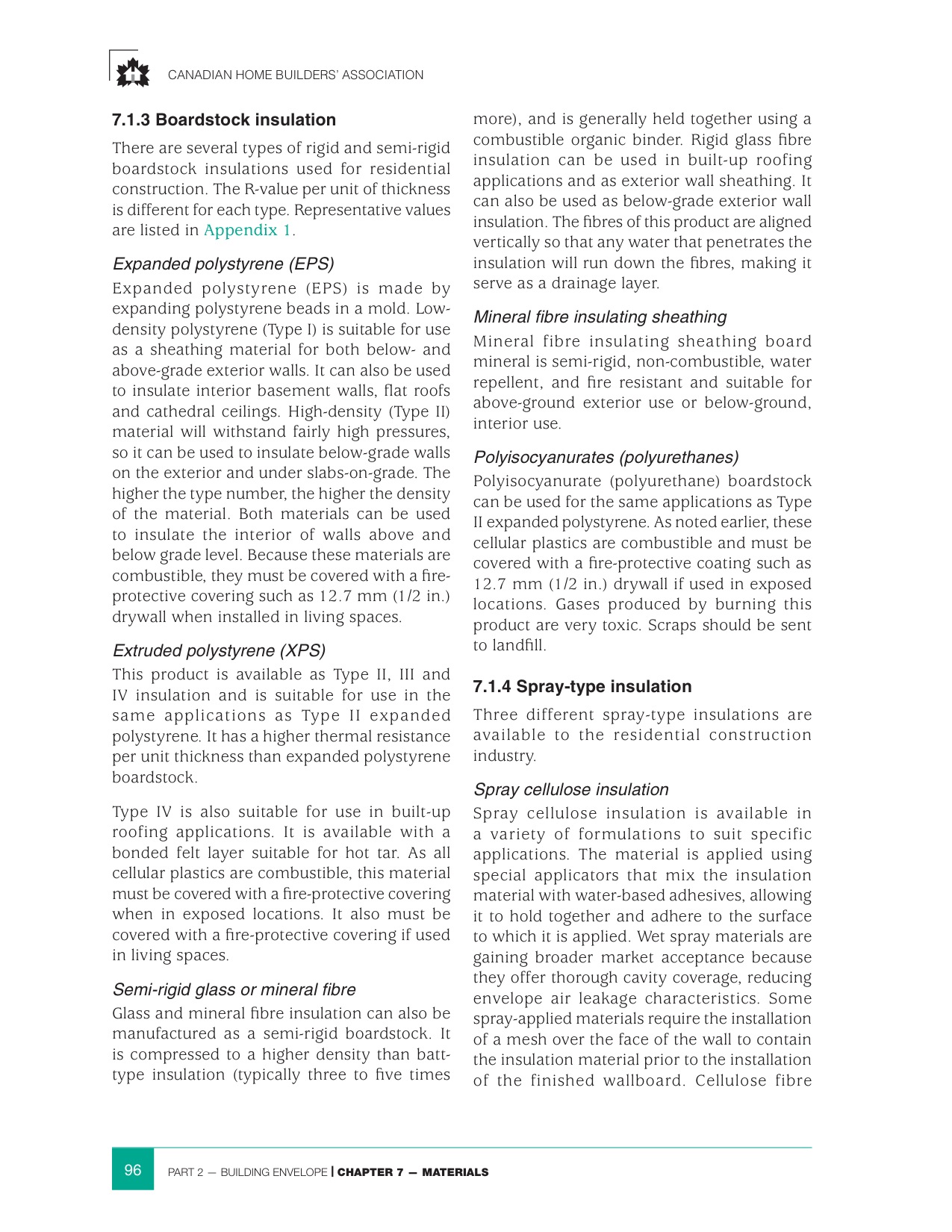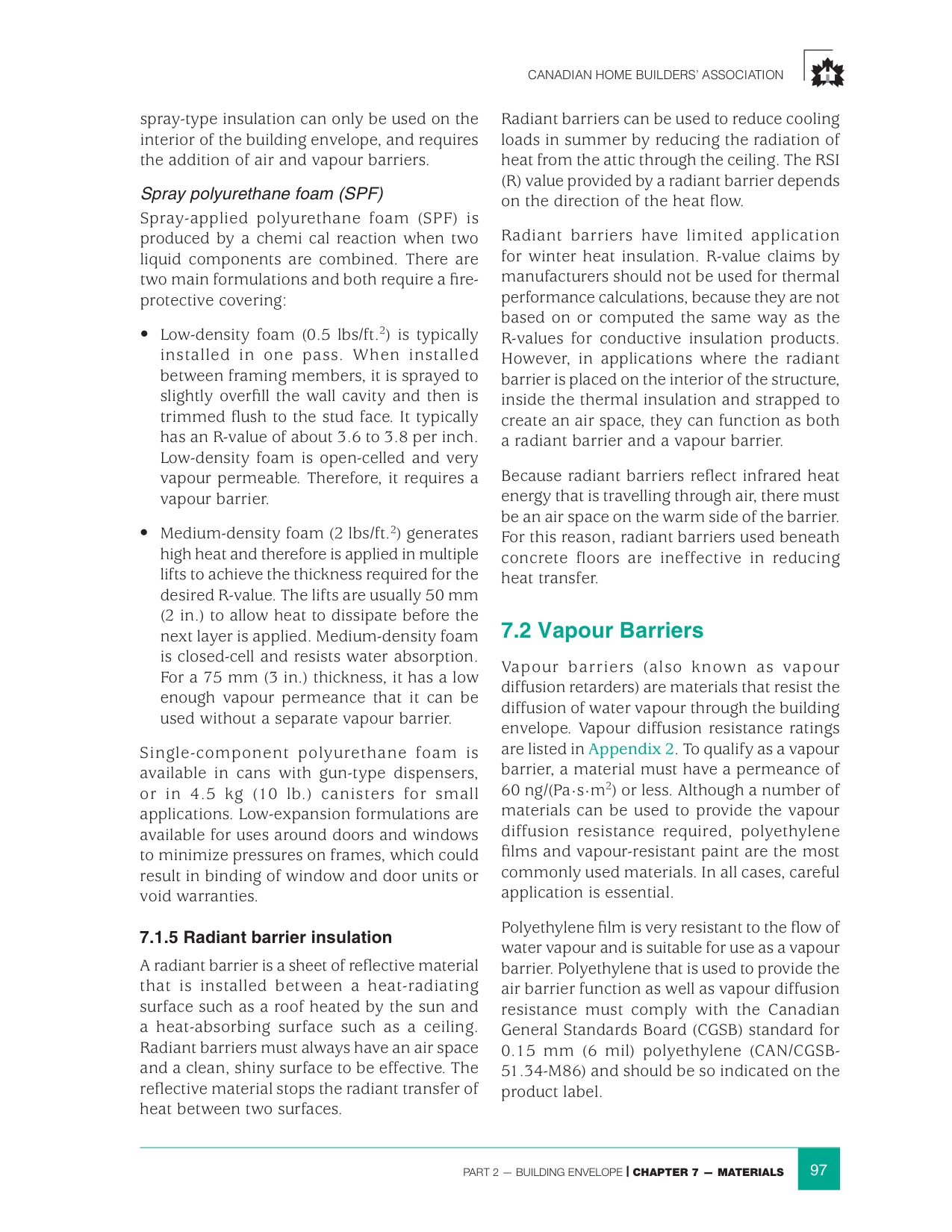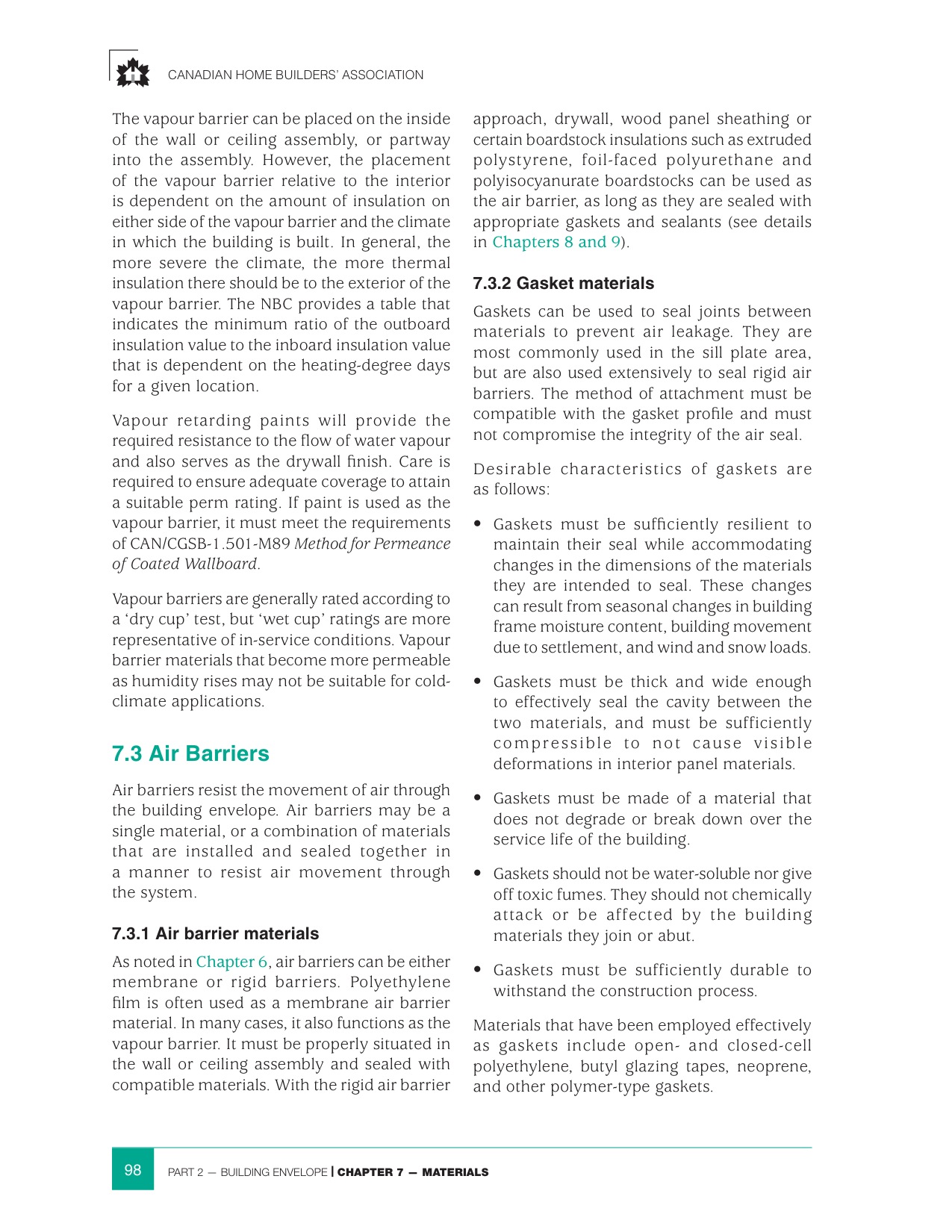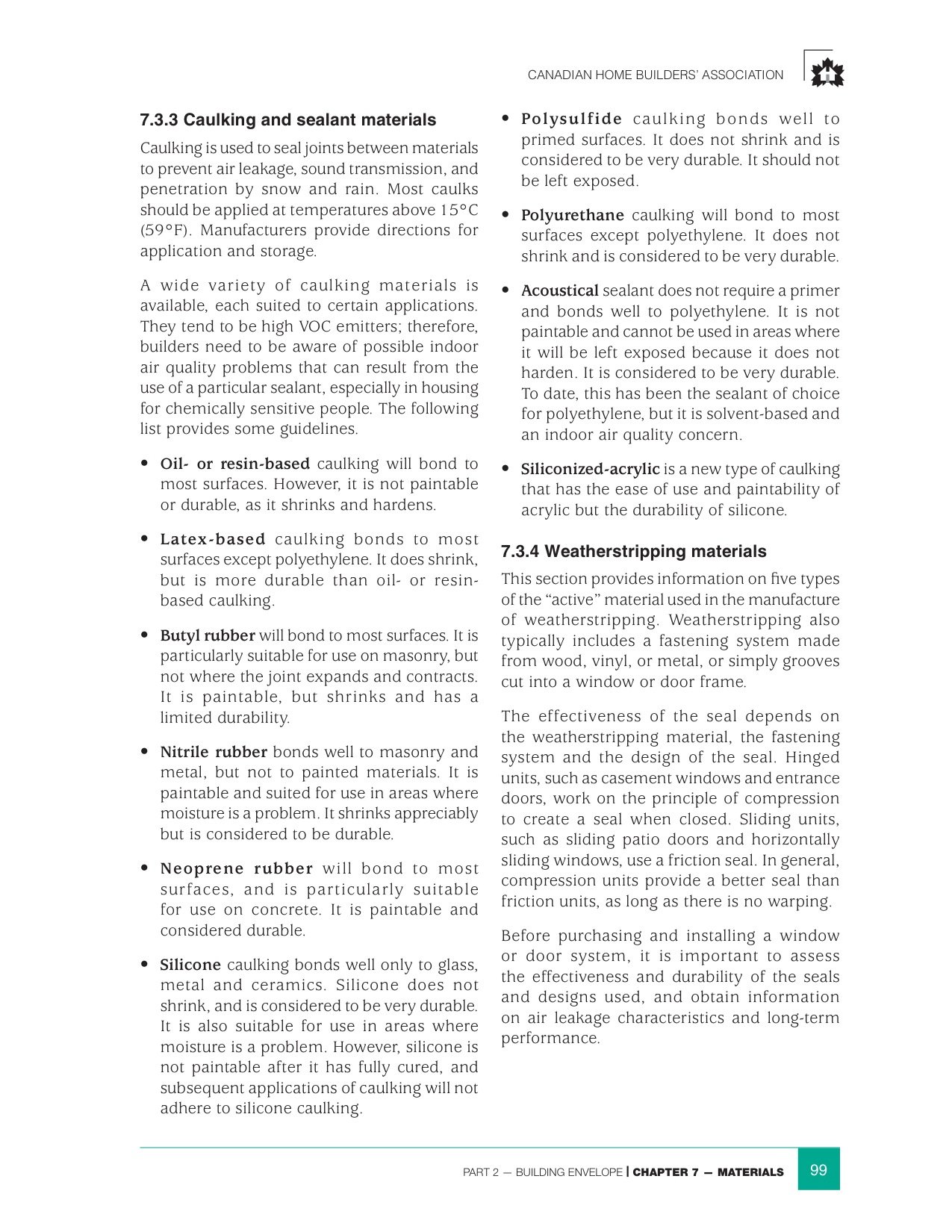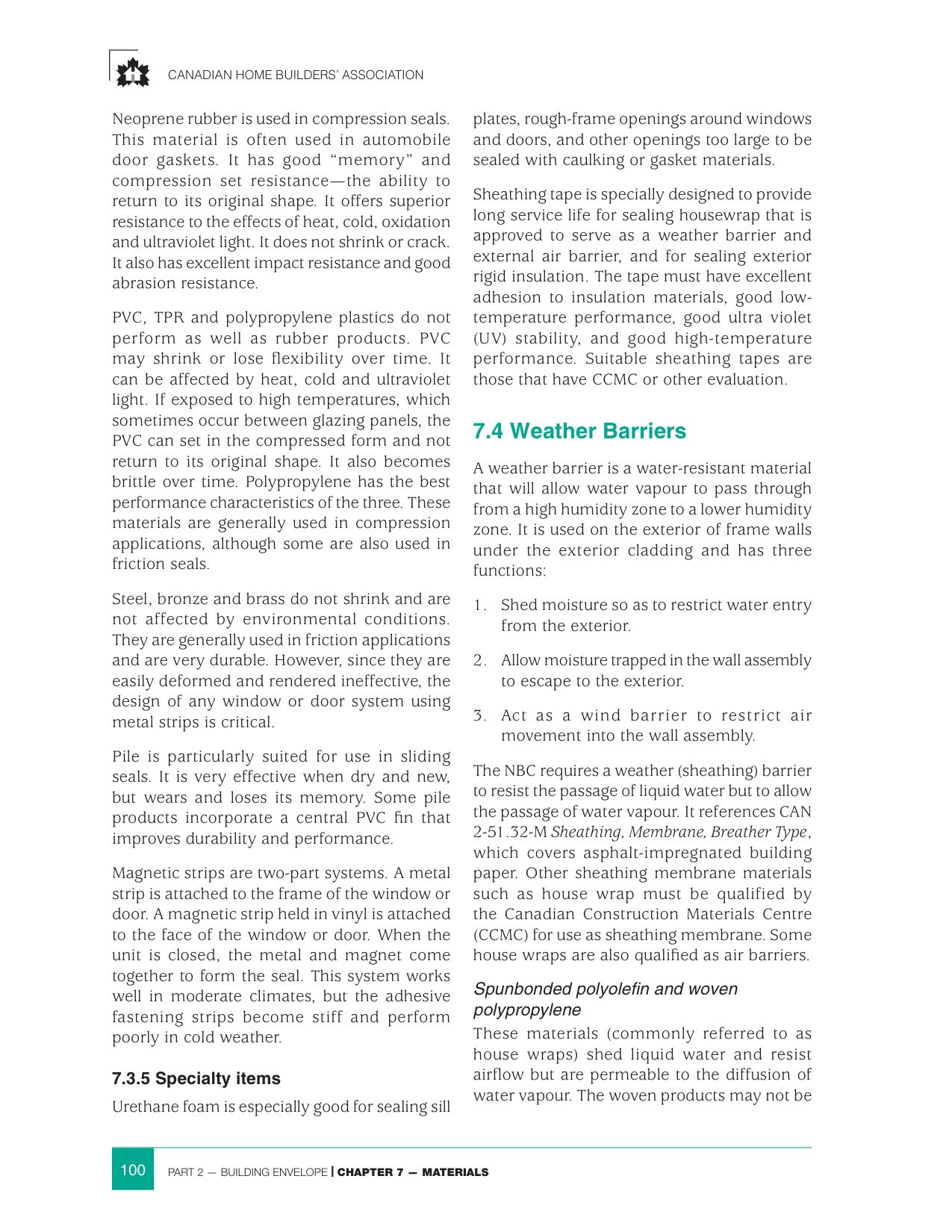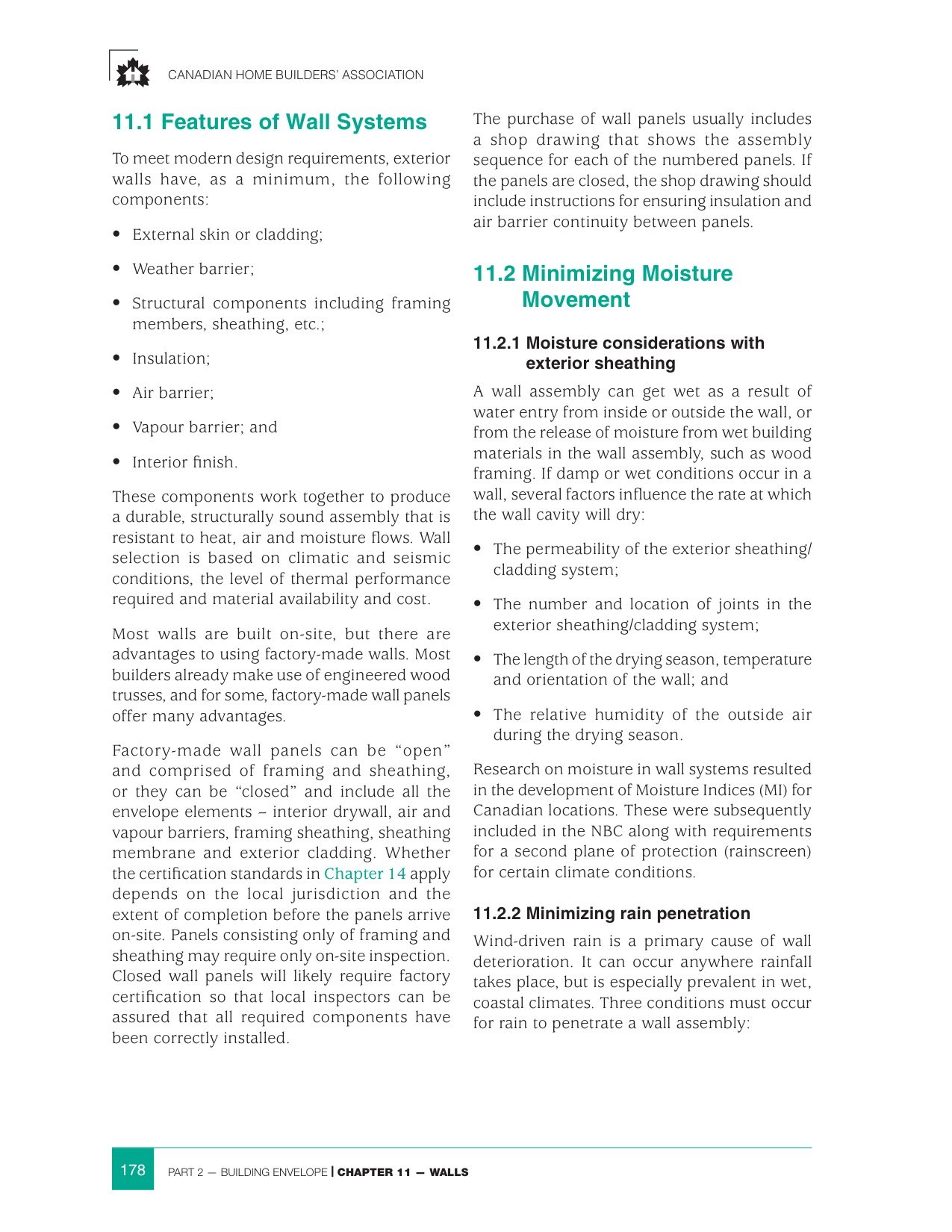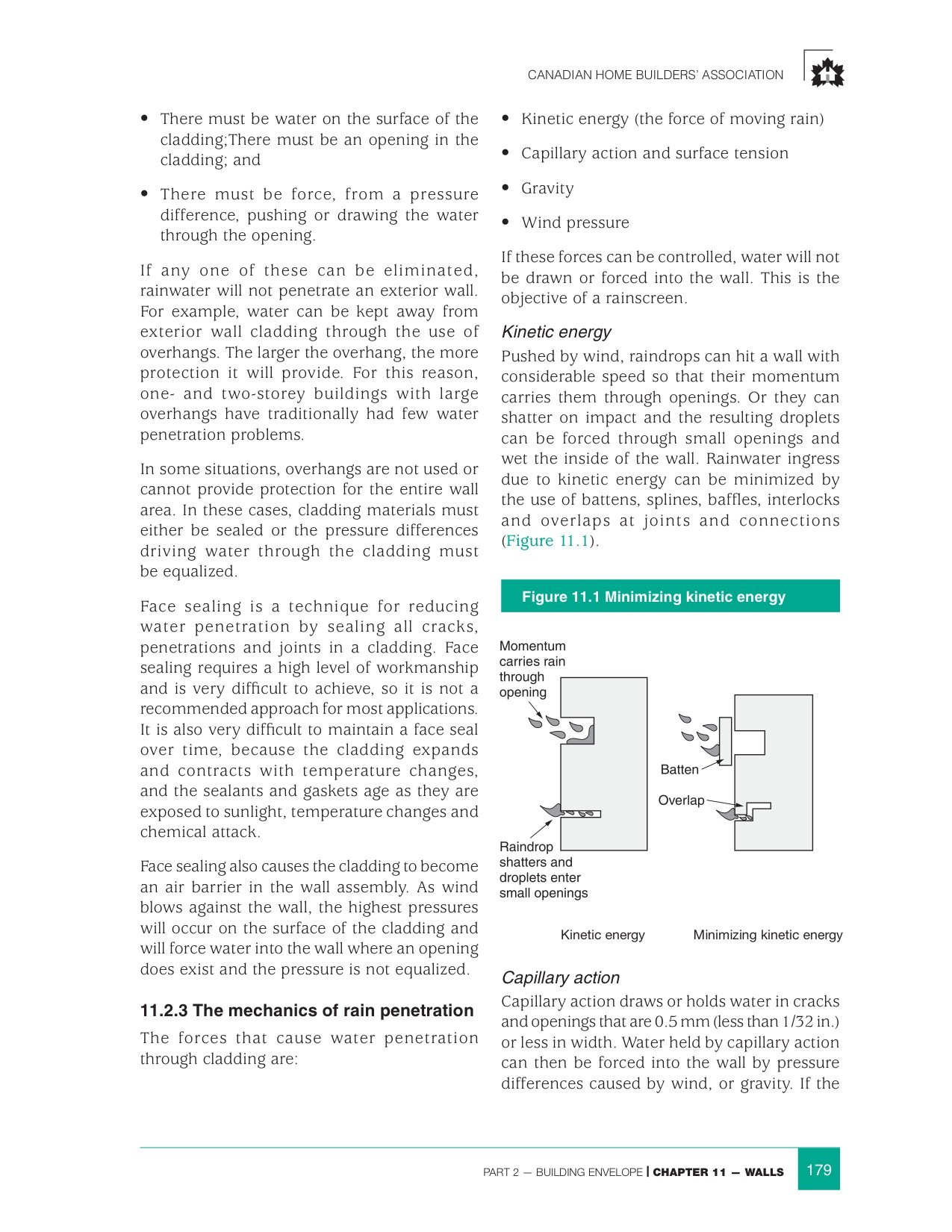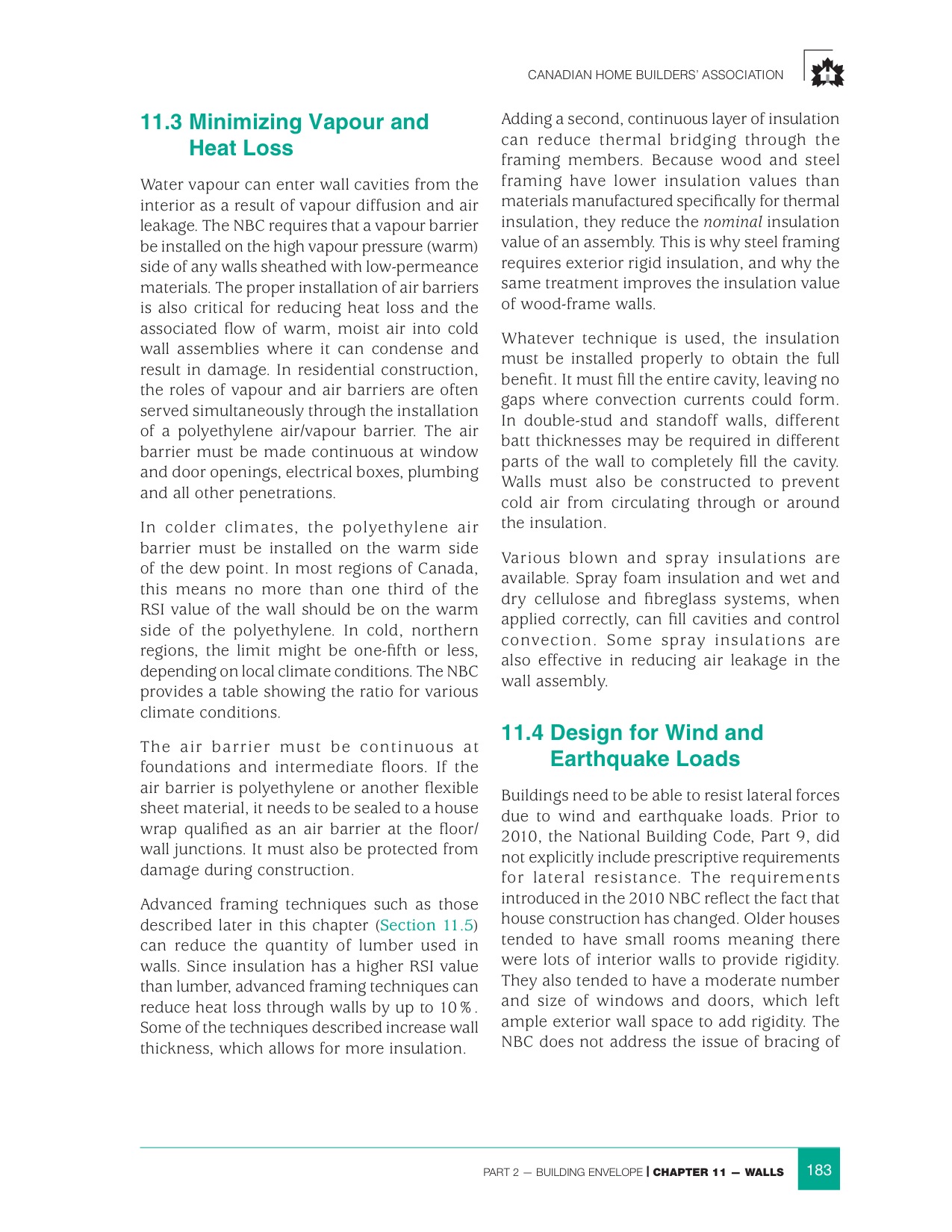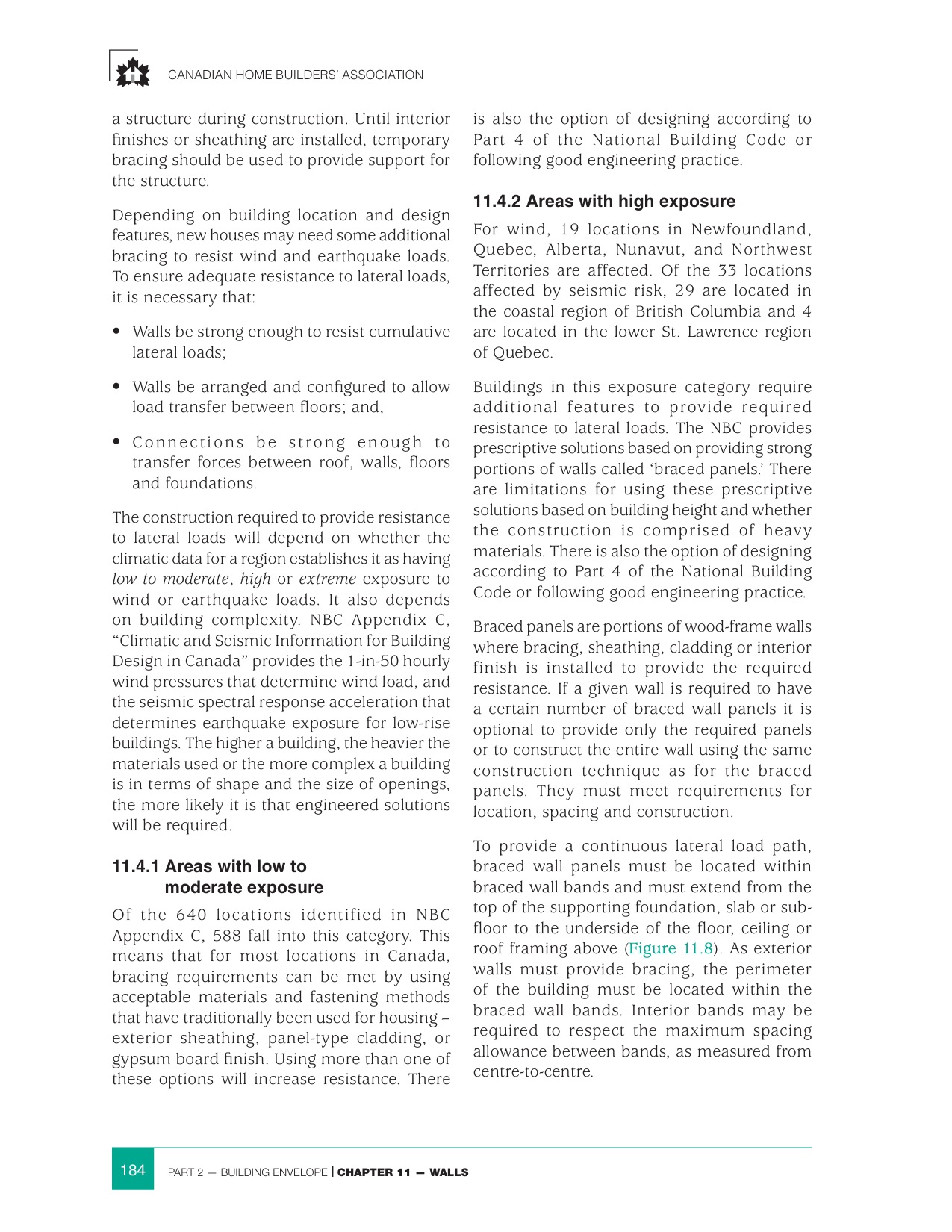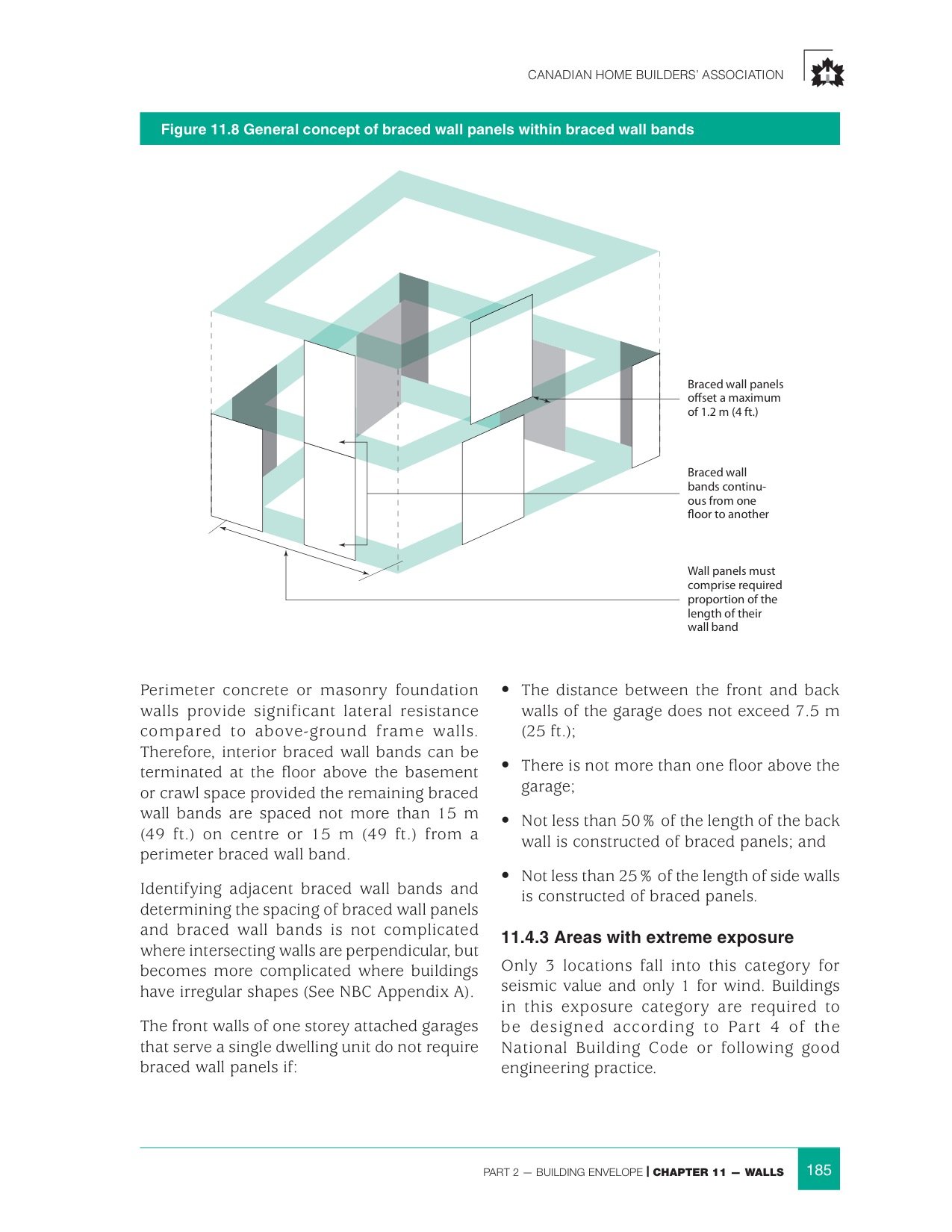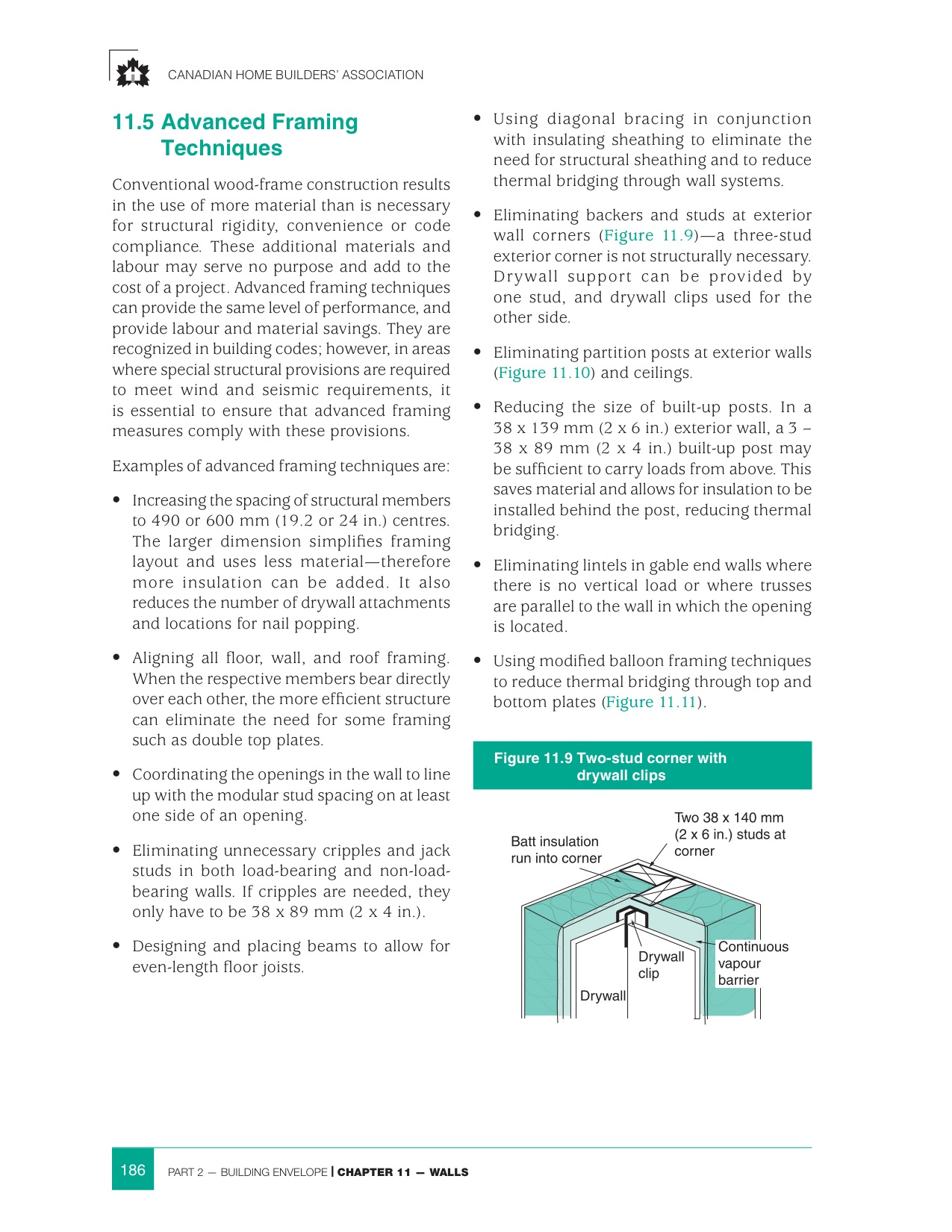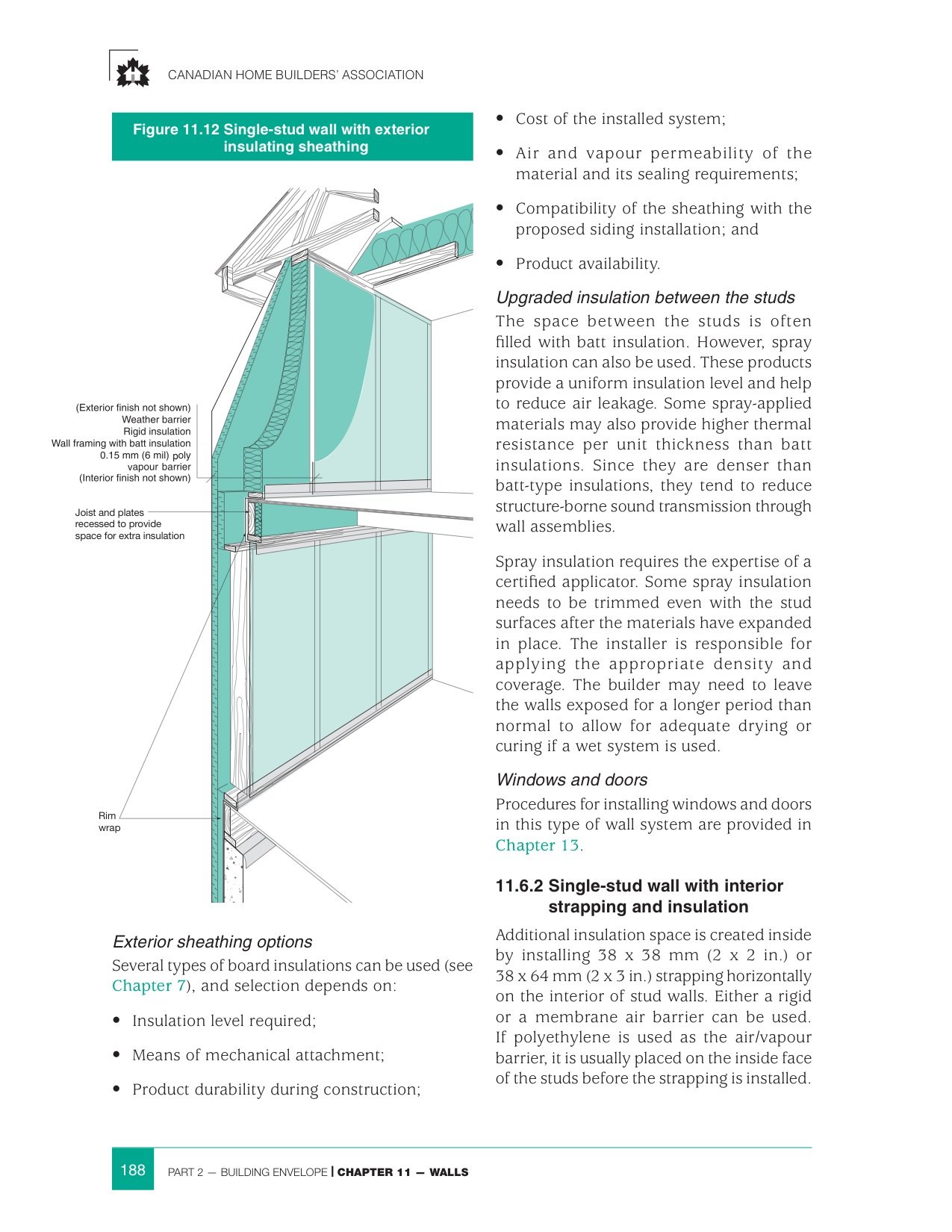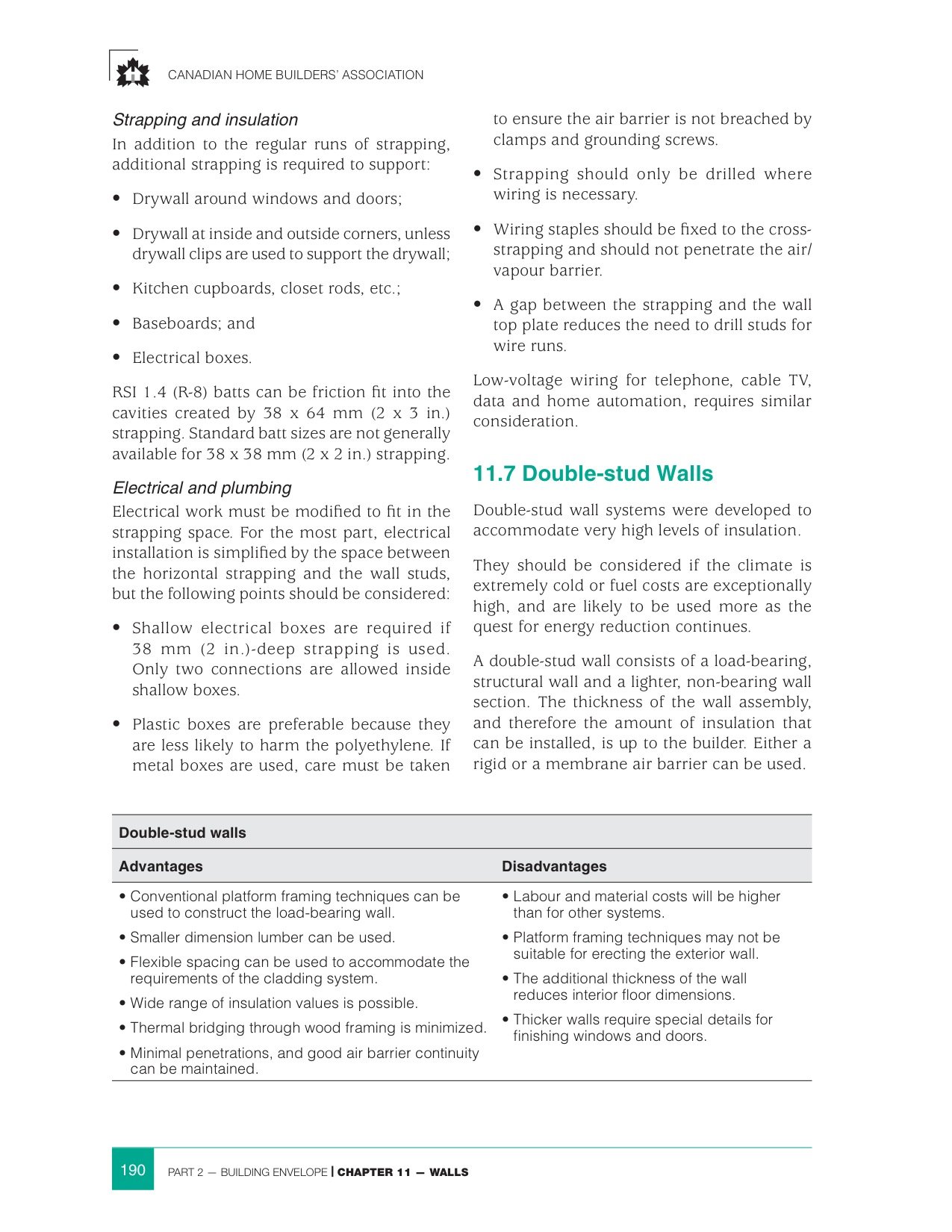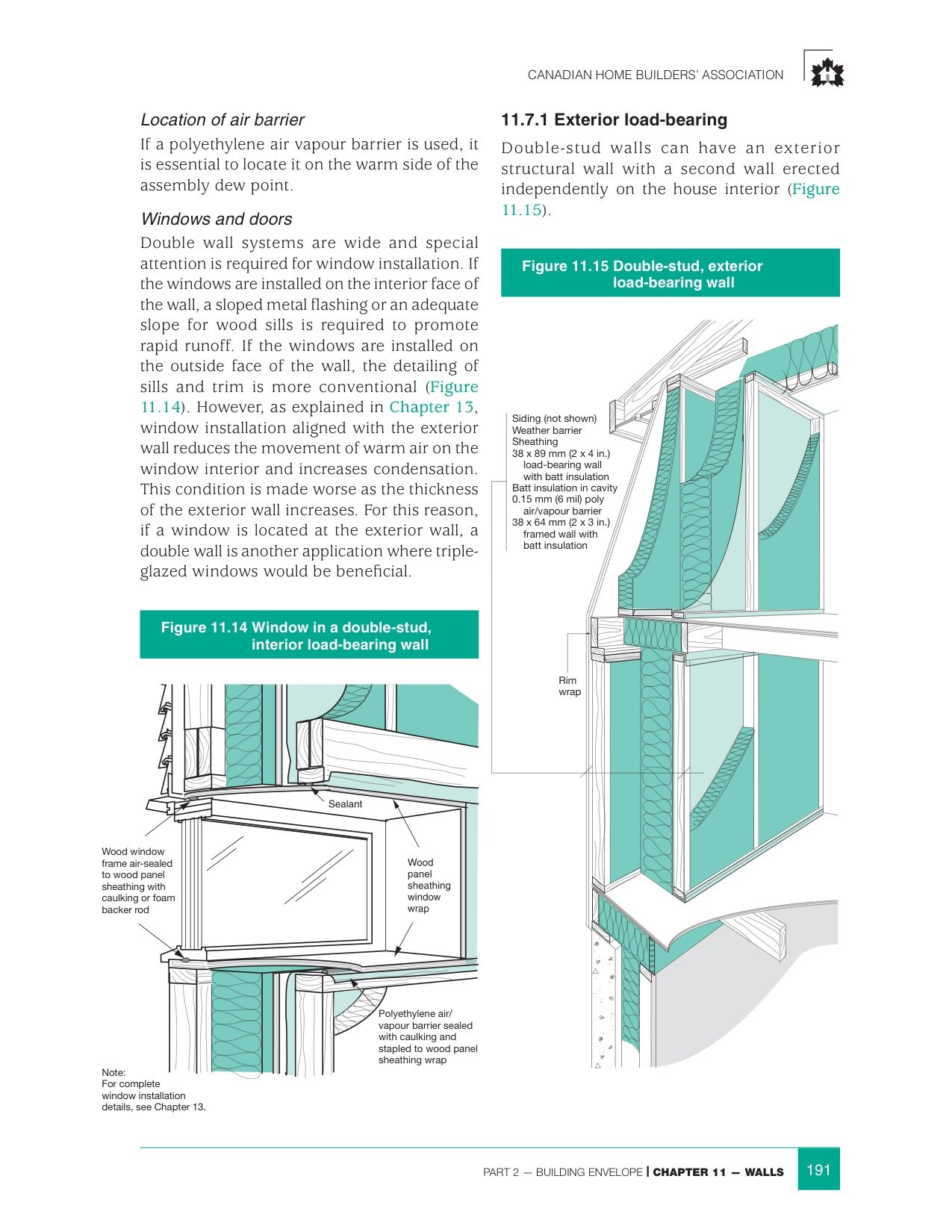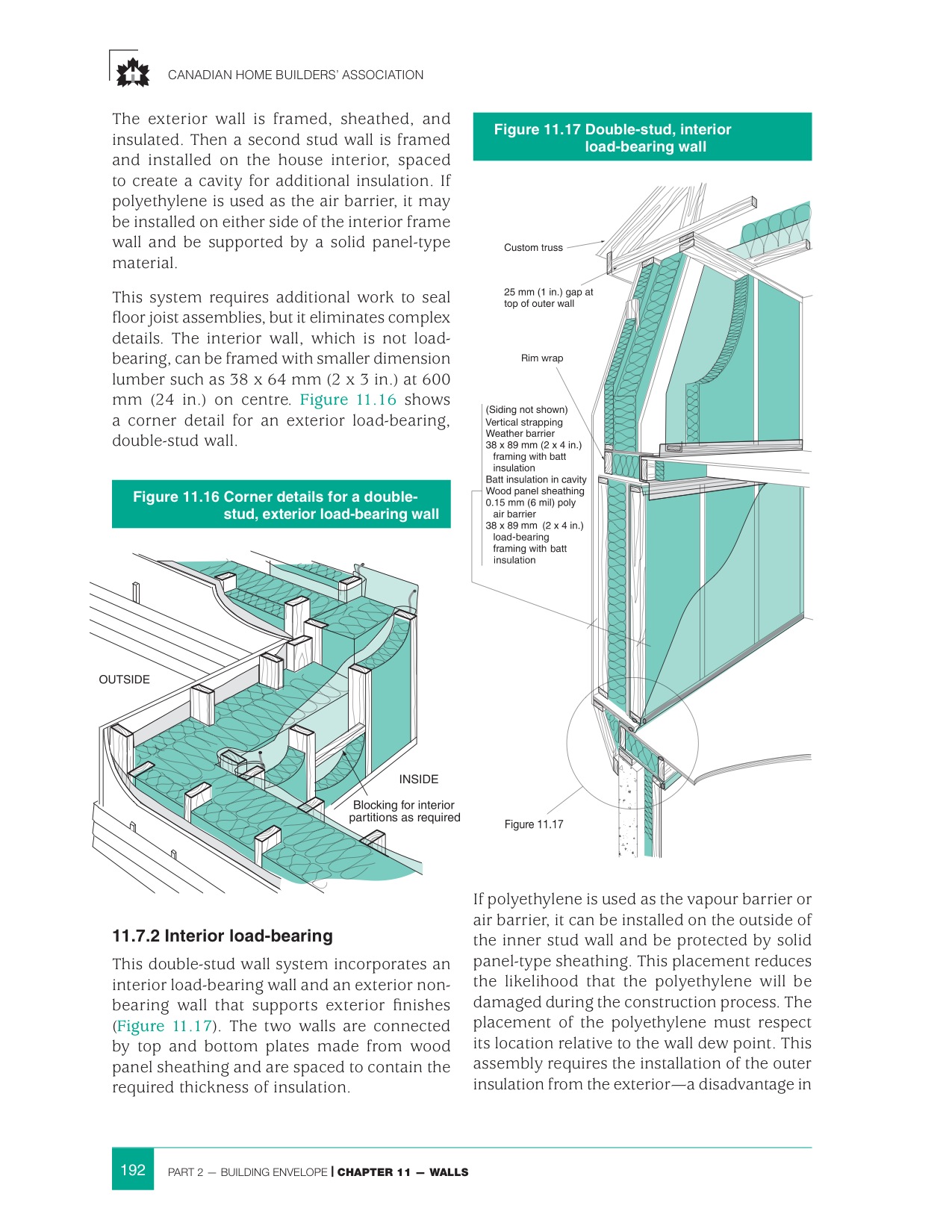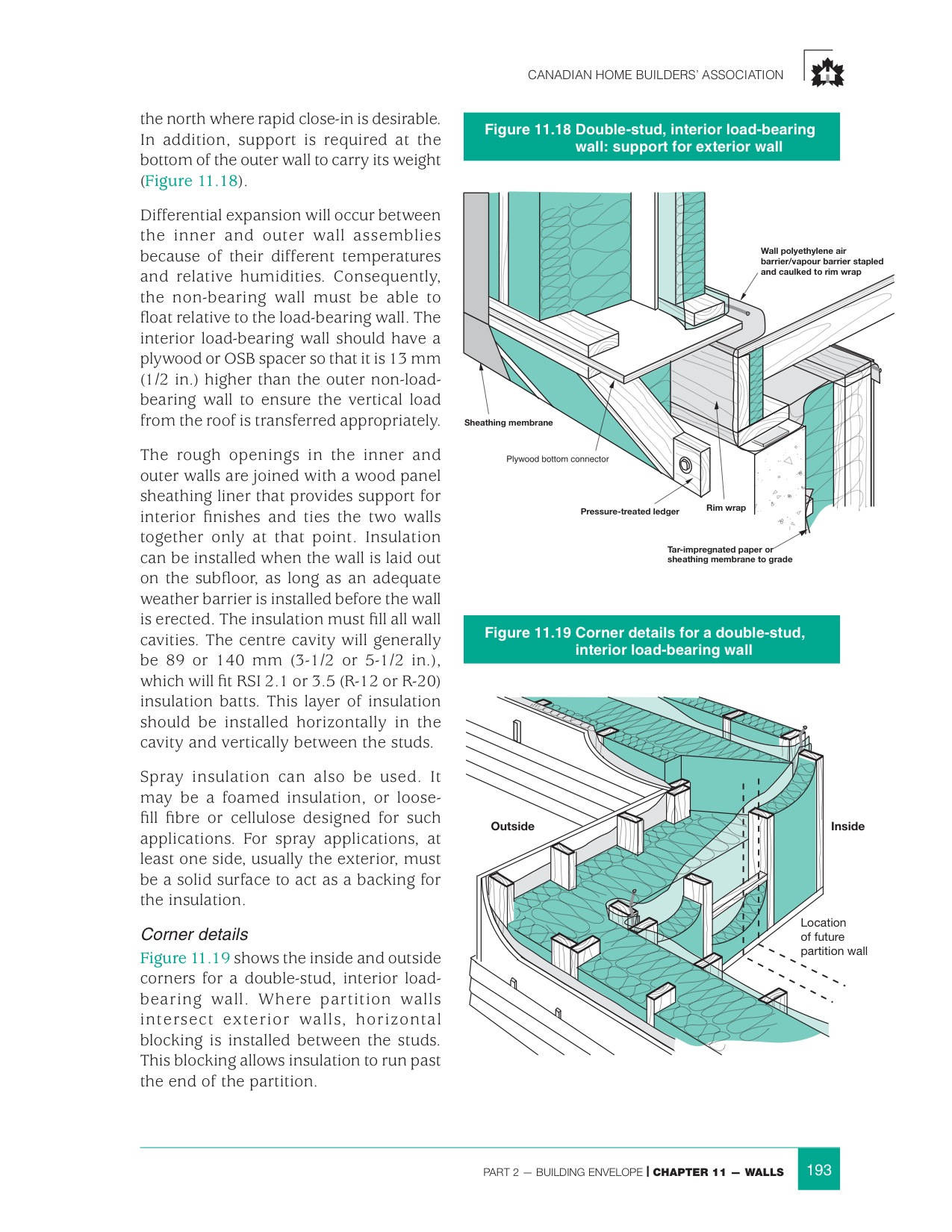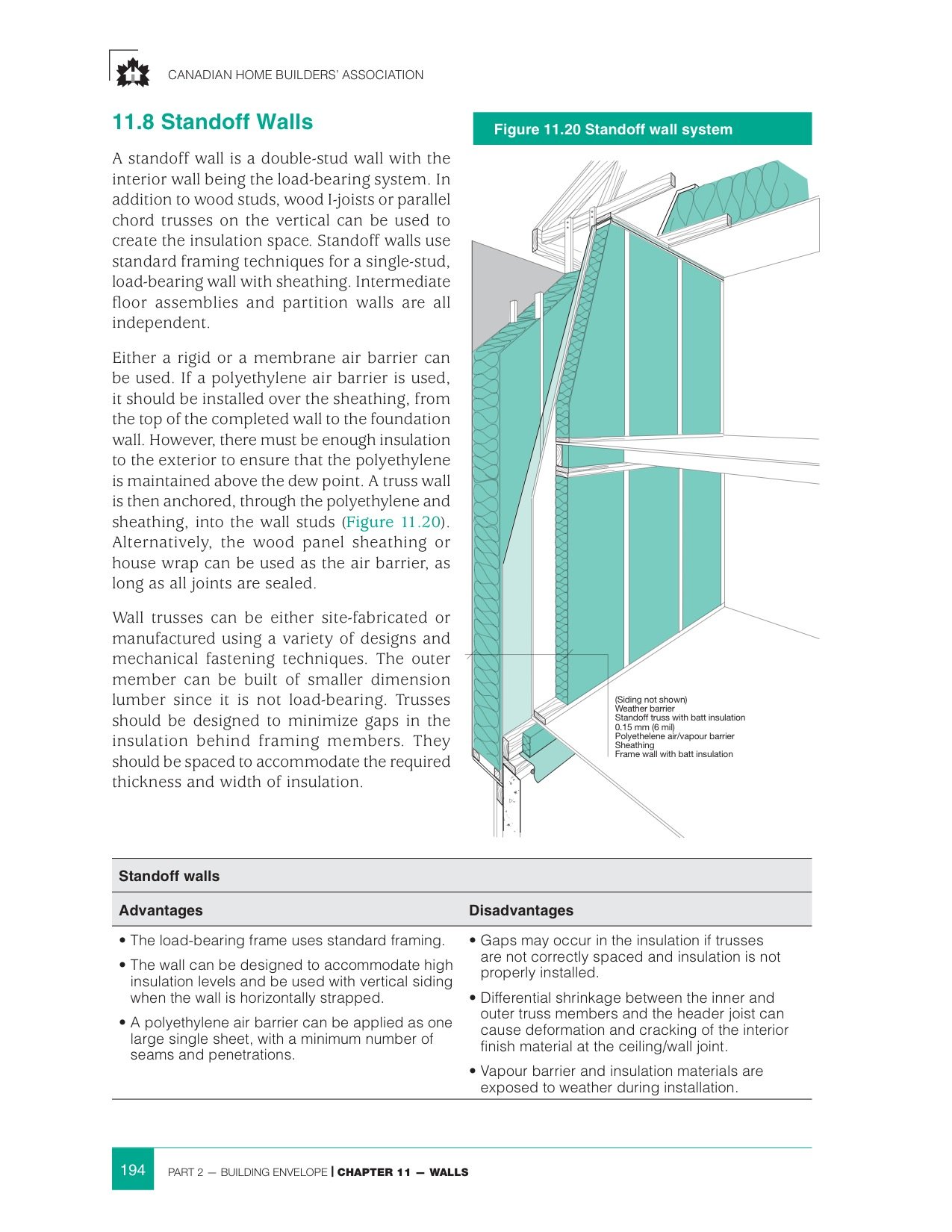The energy and thermal performance and integrity of your wall assemblies depend on core building science concepts:
- Mechanisms of Heat Transfer
- Heat Loss due to Air Leakage
- Moisture and Air Movement
- Relative Humidity and Air Temperature
- Radiant Exchange
- Air Barriers, Vapour Barriers and Weather Barriers
EXCERPTS FROM THE CHBA MANUAL
Excerpts from the 2012 Canadian Home Builder’s Manual were selected to highlight the key concepts listed above. Understanding of these concepts will help in selection and design of high performance building envelopes.
Excerpts from the 2012 Canadian Home Builders Manual (reproduced with permission):
ADDITIONAL SOURCES OF INFORMATION
Guide to Designing Energy Efficient Building Enclosures, FPInnovations
High R Value Enclosure Assemblies, Building Science Corporation
Guide to Attaching Exterior Wall Coverings through Foam Sheathing to Wood or Steel Wall Framing, FSC
Cladding Attachment Over Thick Exterior Insulating Sheathing
Initial and Long-Term Movement of Cladding Installed Over Exterior Rigid Insulation
EIFS Practice Manual by the EIFS Council of Canada
Illustrated Guide: R22+ Effective Walls in Wood-Frame Construction
Advanced Framing Construction Guide
Wood Moisture Content and the Importance of Drying in Wood Building Systems, APA Wood




